Find out more about your health here from our health professionals!
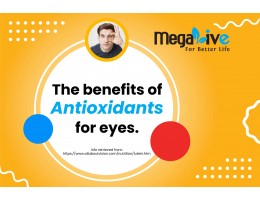
As humans, we never truly appreciate our senses until we lose them. One of the many things we should be thankful for is our senses of smell, touch, sound, taste, and sight. Isn't it horrible to wake up one day and not be able to see, touch, hear sound, or smell?
Many people take their sense of sight for granted because they believe that vision problems can be corrected with the help of lenses or spectacles. People even take it lightly now that we have advanced technology, such as Lasik surgery, because they believe there is a cure. When, in fact, there are numerous health complications or conditions that can impair your ability to see, such as being diagnosed with diabetes. Isn't it terrifying?
The good news is that nutrition can prevent this from happening! A varied and balanced diet can help to prevent many diseases, including blindness. Many studies have found that consuming antioxidants, also known as cancer fighting agents, can help prevent vision loss. Antioxidants are compounds that aid in the scavenging of free radicals that can cause cell mutation and cancer.
Since many of these antioxidants are found in plant-based diets such as vegetables and fruits, one mechanism for this is said to be due to the prevention of other chronic diseases such as hypertension and diabetes, lowering the risk of vision loss. Lutein and zeaxanthin, vitamin A, omega 3, and vitamin C are all antioxidants that have been linked to vision health (2).
Lutein and zeaxanthin are members of the carotenoid family, which is a well-known antioxidant for eye health. Apart from being found in green leafy vegetables like spinach, it can also be found in yellowish, orange-red plant-based foods like capsicum. In nature, lutein and zeaxanthin appear to absorb excess light energy to protect plants from overexposure to sunlight, particularly high-energy light rays known as blue light. While in the human body, lutein and zeaxanthin are abundant in the macula of the human eye, the name 'macula lutea' is derived from lutein, which means yellow spot.

The National Eyes Institute (NEI) conducted research on lutein, zeaxanthin, and the effect of carotenoids supplement taking in May 2013. It is the second largest eye- disease research study, namely, AREDS2. The purpose of this study was to see how nutrients, such as lutein and zeaxanthin, affected the prevention of AMD and other age-related eye diseases. For five years, participants in this study were given 10 mg of lutein and 2 mg of zeaxanthin every day. The use of daily antioxidant supplementation reduces the risk of progressive Age-related-Macular Degeneration (AMD) by 25% among those with early and intermediate macular degeneration, according to this study. However, it is unclear whether it can aid in the prevention of cataracts and their complications.
Vitamin A is another common antioxidant for the eyes. Night blindness is commonly caused by a lack of vitamin A. Vitamin A functions as photoreceptors, where it aids in the maintenance of light-sensing cells in the eyes. It's found in animal-based foods like dairy and egg yolk.
Omega 3 Fatty Acids (1,2)
EPA and DHA, which are derived from omega-3 fatty acids, are essential not only for brain development during infancy, but also for vision health. A study of people with dry eyes found that taking EPA and DHA supplements daily for three months significantly reduced dry eye symptoms by increasing tear fluid production (lacrimal fluid). Oily fish is a good source of EPA and DHA, and microalgae supplements are also available.

Vitamin E (1,3)
Vitamin E is a fat-soluble vitamin that protects fatty acids from oxidation. Because the retina contains a high concentration of fatty acids, adequate vitamin E intake is essential for good eye health. A study that supplemented 7 mg of vitamins E found that it can reduce the risk of age-related cataracts by 6%. However, a randomized controlled study discovered that vitamin E supplementation does not slow or prevent the progression of people who already have eye problems. Almonds, sunflower seeds, and flaxseed oil are good sources of vitamin E.
Vitamin C (1,3)
Vitamin C is commonly consumed for skin purposes, but since many studies have discovered that vitamin C is an important antioxidant for eye health as well, many supplements are now beginning to incorporate vitamin c rich sources in eye supplementation. It's a good thing because it gives you two effects in one!
Zinc (1,3)
Zinc is abundant in the eyes. It functions as a transporter for vitamin A, which is later involved in the formation of visual pigments in the retina known as melanin. As a result, zinc deficiency has been linked to night blindness. Oysters are a natural dietary resource high in zinc that is also beneficial to men's health!
In conclusion
Taking care of your vision health entails more than just avoiding screens and wearing sunglasses when you go outside. It is also what you put inside your body. Again, healthy eating is important for overall health, including vision!
References
All About Vision. Lutein and Zeaxanthin. Eye and vision benefits. https://www.allaboutvision.com/nutrition/lutein.htm (Accessed on Aug, 26, 2020).American
Optometric Association (AOA). Diet and Nutrition. Adding Powerful Antioxidants in your diet. https://www.aoa.org/healthy-eyes/caring-for-your-eyes/diet-and-nutrition?sso=y (Accessed on Aug, 26, 2020)
8 Nutrients that will optimize your eye health. https://www.healthline.com/nutrition/8-nutrients-for-eyes. (Accessed on Aug 26, 2020)

Nicotinamide mononucleotide (NMN) has garnered attention for its potential to support cellular health and promote overall beauty, particularly in skin rejuvenation. NMN serves as a precursor to nicotinamide adenine dinucleotide (NAD+), a critical coenzyme involved in energy metabolism and cellular repair processes.
Research highlights its potential in improving skin health by reducing oxidative stress, inflammation, and signs of aging. For instance, NMN has been shown to protect human skin cells from damage induced by environmental stress by reducing reactive oxygen species (ROS) while restoring DNA-repairing enzymes.
Additionally, NMN supports collagen production and enhances skin elasticity, which can combat wrinkles and dullness. By boosting NAD+ levels, NMN also improves mitochondrial function, crucial for maintaining youthful, radiant skin.
Skin Health Benefits
NMN’s ability to enhance NAD+ levels provide several skin-related benefits:
Beauty Beyond Skin
NMN’s role in activating sirtuins, proteins associated with longevity, extends its benefits to overall beauty. These proteins help regulate inflammation, improve pigmentation issues, and contribute to even skin tone.
Patented NMN form (Uthever®)
The Uthever® NMN formulation, specifically used in supplements, has been clinically tested. In a study of 66 participants, it demonstrated a significant 38% increase in NAD+/NADH levels after two months, suggesting its efficacy in boosting cellular energy and supporting anti-aging processes.
Conclusion
While NMN shows promise in enhancing skin health and beauty, it is important to consult a healthcare practitioner before using NMN supplements. Factors such as existing health conditions, medications, or other supplements may influence its suitability for individual use.
References

There are many factors influencing skin condition, but in this post, we are going to share on tips on how to make your skin glow!
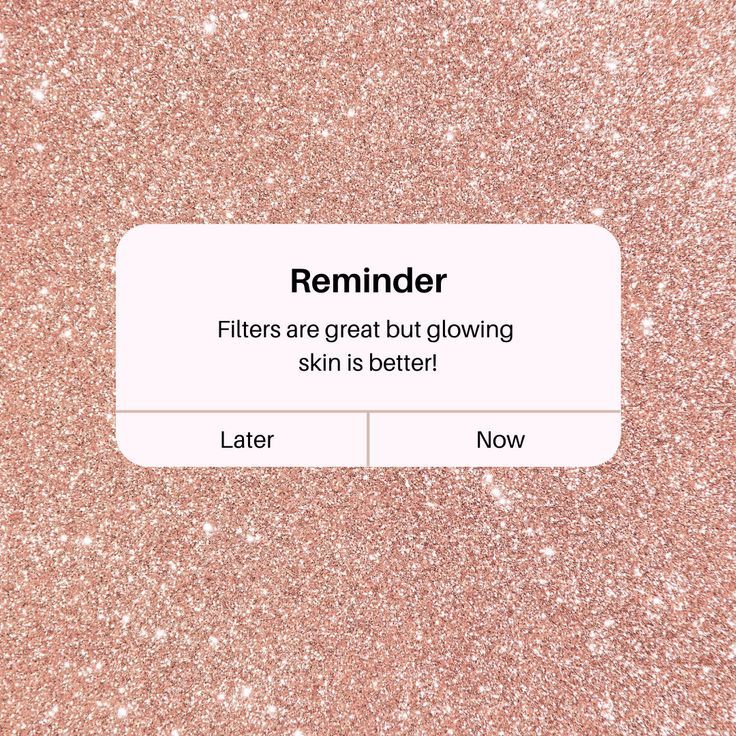
As much as smoking is bad to your lung so does it to your skin
Cigarette smoke contain many harmful substances to our body, as we know. However as for the skin, it releases carbon monoxide which displace oxygen in your skin and nicotine which reduce blood flow which will make skin dry and discolored. Smoking also triggers the destruction of collagen in the skin hence skin loss its elasticity and produce wrinkles and fine lines!
When you are younger and a smoker you cannot really see the difference but as you get older, the damage on your appearance will be obvious and you will be looking older as compared to your actual age (1).

Sunscreen is a must
Malaysia is a humid and warm country all year long; thus, wearing sunscreen is a must! Sunscreen helps protect skin from premature ageing like wrinkles, fine lines, and hyperpigmentation. Studies show that people who are under 55 years old and wear sunscreen regularly can lower their risk of premature ageing by 24% as compared to those who wear sunscreen occasionally or not at all.
If you are a newbie looking for sunscreen, look for sunscreen with at least SPF 30 (Sun Protecting Factor) and choose sunscreen according to your skin type, such as aqua sunscreen, which is meant for dry skin, etc. You also must apply sunscreen every 2 hours or after exercise. Sunscreen should also be applied at least 30 minutes before going out, as it requires time to be absorbed by the skin and activated in order to protect your skin (2).
Move, Move, Move
We know that exercising regularly can keep our bodies fit and healthy, but did you know that it can also keep your skin healthy?
Exercise increases blood circulation and flow throughout the body, hence making your skin radiant and glowing. Pssttt…you can kill twoi birds with one stone by doing this; you can keep your body lean while also getting healthy skin! (3)
Keep your body hydrated
Our skin is exposed to various conditions: cold due to the air conditioner, warm due to the water, etc., so drinking plenty of water will make our skin condition better. Everybody is born with a particular skin type, whether it is dry, oily, or a combination; however, all these surrounding factors and age factor can change skin condition as well (4, 5).
In order to see whether your skin is dry, try to pinch it in an area and see whether it has a wrinkle on it after your pinch or whether it bounces back after your pinch, which is an indicator for well-hydrated skin. Wrinkles and less bouncy skin are indicators of dry skin; it can also sometimes be seen based on your urine colour if it is too concentrated, meaning your body does not get a sufficient amount of water (4, 5).
Lifestyle changes can reverse this; drink at least 8 glasses of water per day. Limiting the intake of alcohol and drinking less caffeinated drinks like coffee and tea can improve the dry skin condition (4).
Face and manage your stress.
We used to believe that suppressing our feelings and emotions was better for everyone, including ourselves. However, that is not always the case; we have to deal with it and manage it. Talk to someone if you have a problem; share it with someone that you trust. Think positive.
Pick up some hobbies, distract yourself from overthinking about it, and slowly find solutions. Doing outdoor activities can help calm a person if their mind is too saturated with a lot of stuff, or spending time alone can de-clutter their mind and create more space. Cleaning can sometimes make you a lot happier and help you think better about the solution to your problem.
Established a skincare routine
Skin care is essential for keeping skin in good condition. A good skin care routine will improve skin condition, but only if the products used are of high quality.First, you have to find out your skin type. Normal skin, dry skin, oily skin, and combination skin are the four skin types.
To determine your skin type, start by washing your face and then waiting an hour. After it’s been an hour, dab your forehead and nose with a tissue and check to see if any oil has rubbed off. If it did, it’s a sign that you have oily skin. If there isn’t any oil but your face feels dry and tight, you may have dry skin (4,5).
Once you have figured out your skin type, find the right product for it. The common one should have cleanser, moisturizer, toner, sunscreen, exfoliator, and makeup removal. Start with cleansing your face at least twice per day. If you need to exfoliate your skin at least twice a week, this is a good time to remove all of the dead cells, dirt, and blemishes on your face (5).
Once you have done these, your skin is now ready to absorb all the good nutrients from your skincare, so now is the time for you to apply toner and moisturizer. Toner and moisturiser are good for hydrating the skin. After that, the skin is completely moisturized.You can now apply sunscreen.After sunscreen, it is time for you to wear makeup. If you are wearing make-up, make sure to thoroughly clean it at the end of the day using make-up removal and start your nighttime skin care routine as per daytime (5).
The only difference between a daytime and nighttime skincare routine is that moisturiser used on the skin is encouraged to be applied thickly at night so that the skin is not dry in the morning!
There are also people who want to give extra care and a boost to their skin; they can try to use serum. Serum is a product that is very concentrated with good vitamins for the skin, like vitamin A, C, and E. It’s usually used to fade scars or add more vitamins to the skin. However, the correct order of using skincare products is important; if not, skin cannot absorb the nutrients that the product has, and it will just go to waste (5).
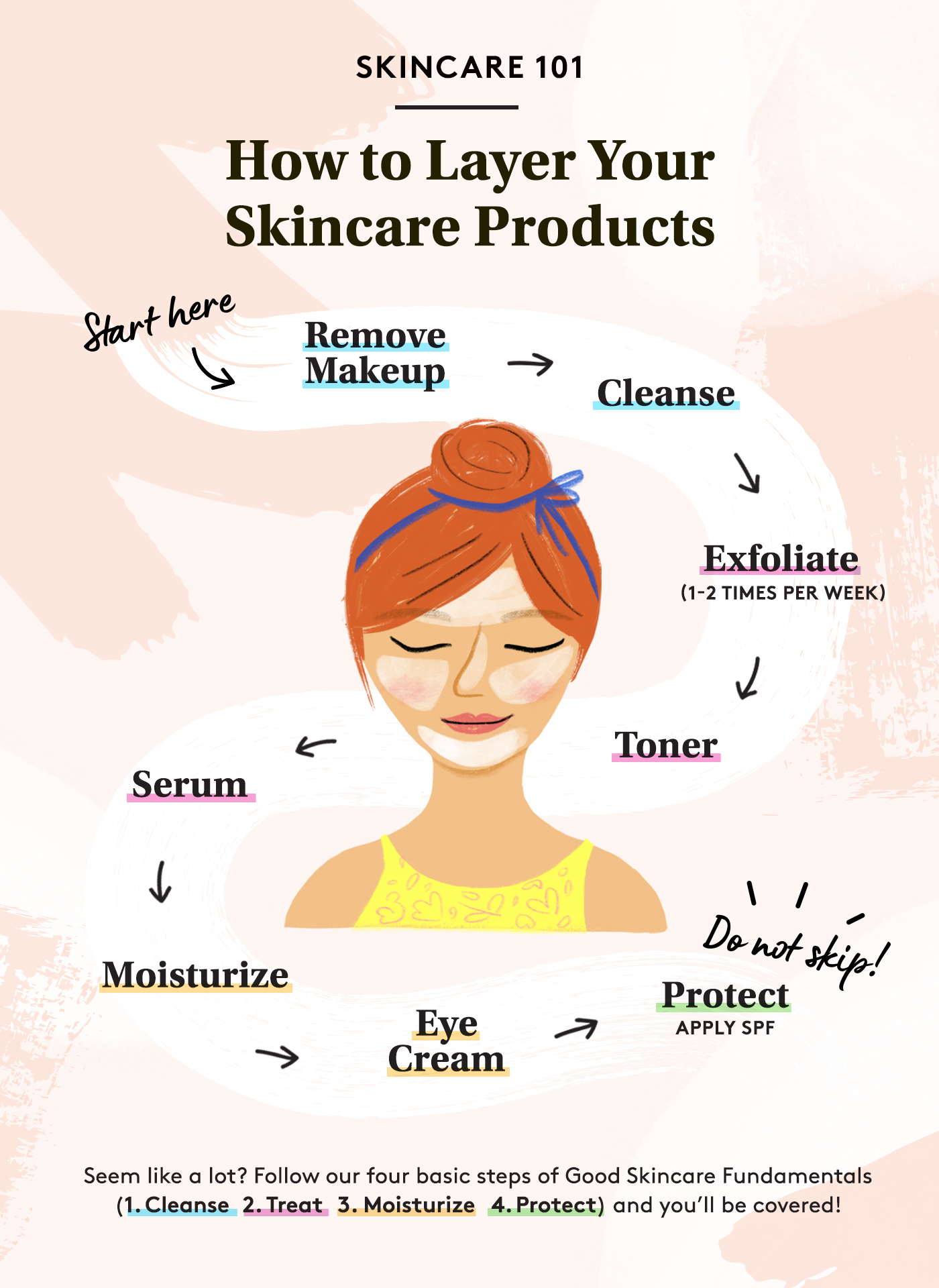
Diet vs skin condition
As much as sugary food is bad for your waistline, so is it for your skin! Acne and breakouts can be exacerbated by sugary foods.Sugar and foods high on the glycemic index (meaning foods that, once ingested, convert quickly into glucose and cause your body’s insulin levels to elevate) lead to a burst of inflammation that goes throughout your entire body (6).
Vitamin C
Vitamin C is a very common vitamin used to make skin become radiant and glow. Vitamin C-rich foods are often used to boost skin conditions. Fruits like guava are really rich with vitamin C; it even has twice the content of vitamin C in an orange!
However, if one is a picky eater, it is also best to actually consume a vitamin C supplement rather than apply it topically (topical application). On the market, there are many types of vitamin C supplements. Most of it has really high vitamin C content, such as 500 mg or 1000 mg. However, according to the RNI (recommended nutrient intake), our body only needs about 70 mg of vitamin C, so the higher dosage of the vitamin will just be excreted through urine.
On the supplement ingredients list, you can see whether the supplement is made from natural or synthetic ingredients.Synthetic vitamin C is called ascorbic acid; it usually irritates the stomach and has a higher dosage of vitamin C as compared to vitamin C that is derived from natural fruits like berries, guavas, oranges, etc.
Synthetic vitamin C or ascorbic acid is also usually coloured with food colouring to make the supplement look as if it has a high content of vitamin C. If you notice that your soluble vitamin C supplement stains your glass of water after being diluted in it, there is a high probability that the supplement that you are taking has food colouring in it.
So be wise in choosing your vitamin C supplements. In order to make your skin glow, know how to find good vitamin C. Remember, it has to be derived from a natural source with no coloring, and the content of the vitamin C does not need to be too high!
References

The word collagen comes from the Greek word "kola,” which means glue, and that is basically the function of collagen, which is to hold protein and/or non-protein substances together. As an example, in the skin, the function of collagen is to hold all the skin structure together. Collagen is one of the major building blocks for many parts of the body, including bones, skin, tendons, and ligaments. It accounts for about one-third of the body's protein composition. It is also found in many other body parts, including blood vessels, corneas, and teeth.
Types of collagen
There are various types of collagen, but the main types are type I, type II, type III, and type IV.
Type I: Most of your body’s collagen is made of type I. It is a densely packed fibre that provides structure to skin, bones, tendons, fibrous cartilage, connective tissue, and teeth.
Type II: This type is made of more loosely packed fibres and is found in elastic cartilage, which cushions the joints.
Type III: This type supports the structure of muscles, organs, and arteries.
Type IV: This type helps with filtration and is found in the layers of your skin.
Collagen in Skin: Do We Need It?
Our body can produce its own collagen; however, the production of collagen gradually declined as we aged, which explains that among the signs of ageing are wrinkles, which come from skin that is less elastic, less supple, and unfirm.
Researchers also revealed that women lose collagen faster than men, causing women’s skin to age faster than men. Apart from gender, nutrition, and recreational drugs, environmental stress such as sun exposure, exposure to toxins such as pollutants, and cigarette smoke can also affect the level of collagen in the body.
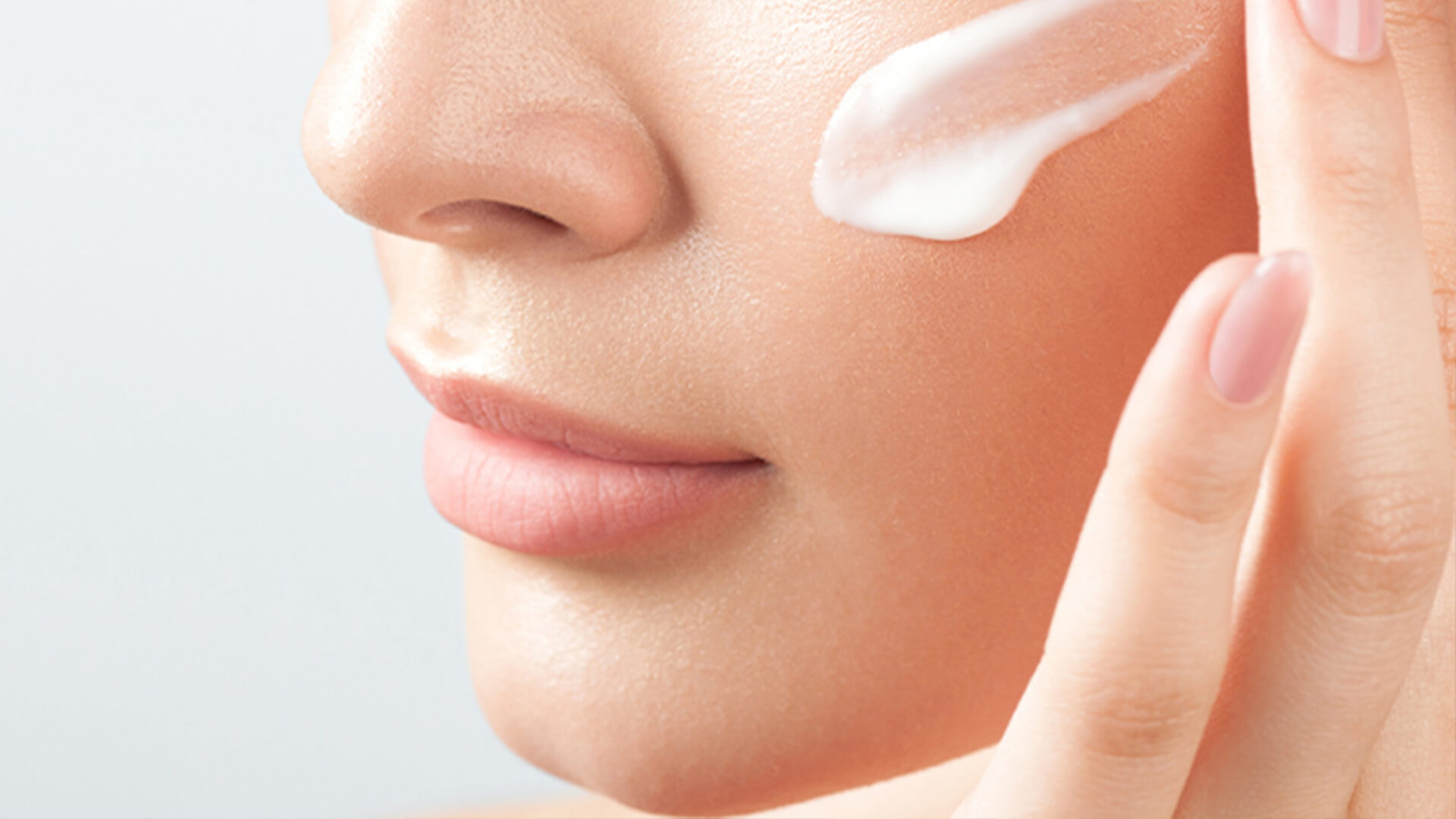
Where can we get collagen from?
The good news is that collagen can be gotten from food. There are foods that can stimulate the production of collagen and break down collagen. The body makes collagen by combining proline and glycine (types of proteins). Thus, consuming foods high in proline and glycine will help restore collagen levels in the body.
According to Dr. Bradley from the Cleveland Clinic, your body cannot make them if it doesn’t have them, which means all the nutrients, such as glycine and proline, are essential to produce collagen, but if we do not acquire them from our diet, then our body might not be able to produce collagen. Foods that are high in collagen are mostly derived from protein-rich foods such as bone broth, pork, chicken, beef, eggs, and fish. Plant-based foods also have added benefits to collagen-rich food consumption since vegetables and fruits contain high levels of antioxidants that can protect against reducing collagen. Types of foods that can break down collagen are sugary foods and refined carbs.
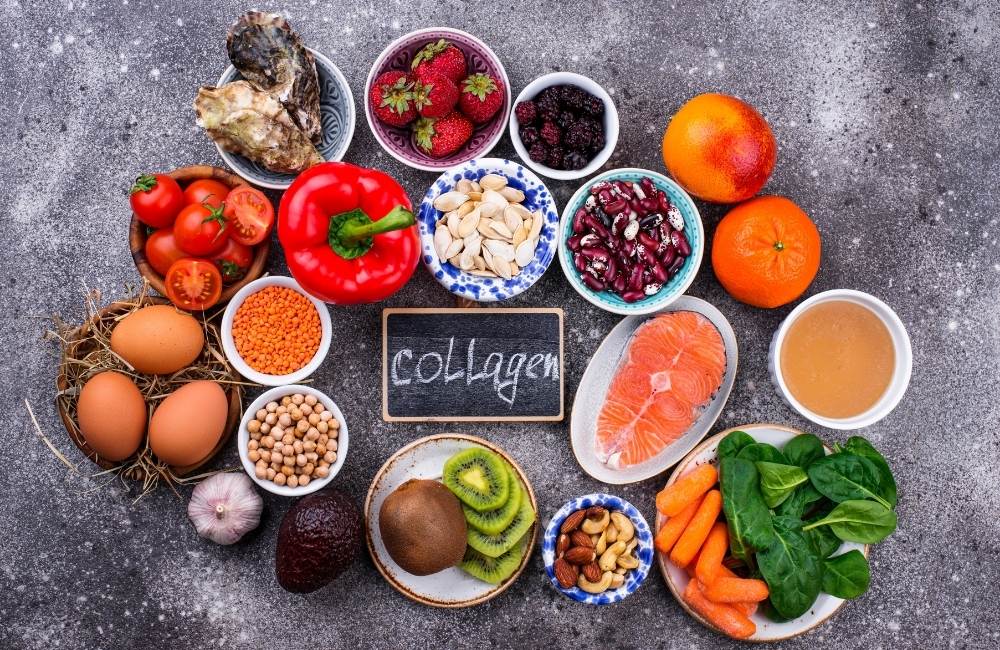
As for supplements containing collagen, they are usually in the form of hydrolyzed collagen. The source of hydrolyzed collagen can be fish, marine seaweed, pork skin, or other food sources that have high collagen contents. It is also said that hydrolyzed collagen is much easier to absorb by the body as compared to collagen from food.
To date, studies that report whether consumption of collagen has benefits to skin, joint health, muscle mass, bone, and many more are inconsistent. It depends on various factors such as the source of collagen, the bioavailability of collagen, the frequency of consuming it, the severity of a skin condition or joint condition previously, and many more. Thus, it is advisable for individuals to check the supplement ingredients prior to consuming any kind of supplement.
Individuals with cyst problems and cancer problems must be careful with their consumption of collagen supplements, as they can be harmful. Hence, it is best to seek professional help before consuming any supplement. Certain supplements are contraindicated with the medicine that you are consuming, etc.
References

Our skin is one of the largest organs in our bodies. It is our body's main defense organ against external insults such as radiation, ultraviolet rays, pathogenic microorganisms (bad bacteria), and mechanical and chemical stress (1). The condition of the skin or the skin barrier is greatly supported by the foods that we eat, whether we like it or not. There are foods that can benefit your skin and foods that can harm your skin. The foods listed below can either make or break your skin!
Omega-3-rich foods
The term "good fat" usually refers to omega-3 fatty acids. It regulates skin oil production, improves hydration balance, controls breakouts, and reduces signs of ageing. Furthermore, when applied topically, it can help soften rough, dry skin and soothe irritation and dermatitis. Omega-3-rich foods can improve skin composition by balancing its inflammatory response to sun damage, as well as improve sensitive skin condition by making it less dehydrated and dry.
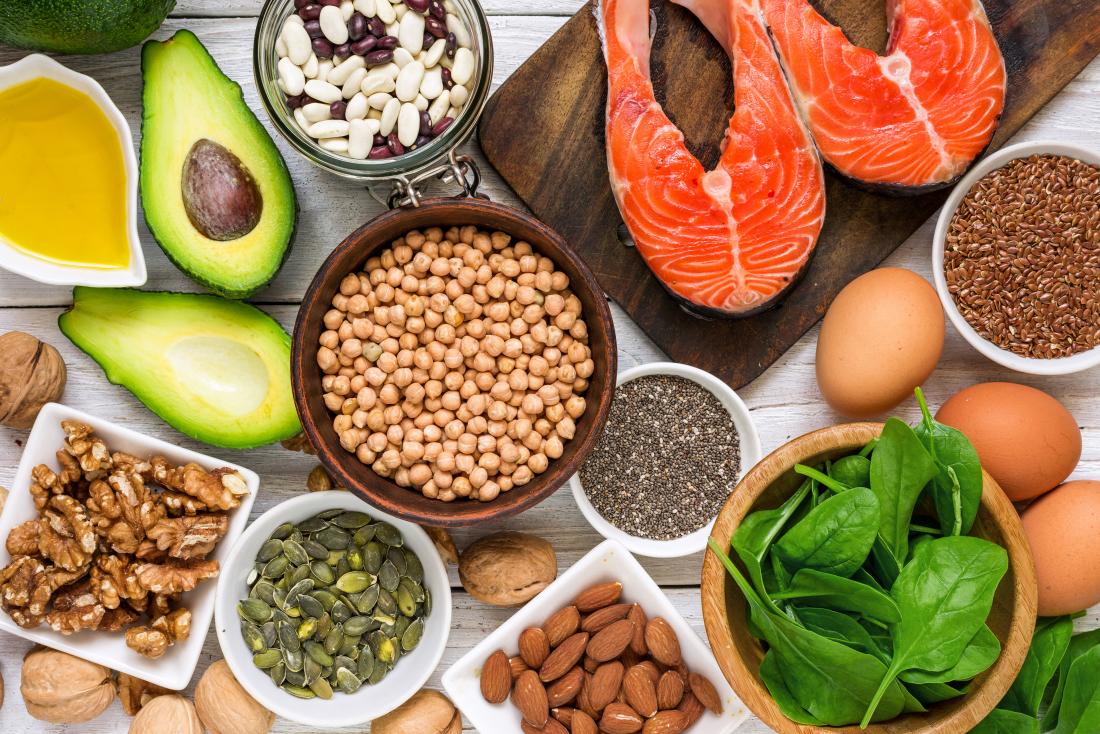
Fish is high in Omega 3 fatty acids. Specifically, fish oil. As a result, if an individual does not consume fish at all or prefers not to consume fish, it is recommended that they take Omega 3 and 6 supplements for their heart health. Omega-3-rich fish include mackerel, tuna, sardine and anchovies, salmon, and herring. Freshwater fish rich in omega 3 are also available in Malaysia, including catfish (ikan keli), patin fish, and terubok fish.
Aside from that, certain plant-based foods, such as spinach (bayam), mustard leaf (sawi), and 'salad roket,' contain high levels of omega 3. There are also omega-3-rich oils that can be used in cooking, such as canola oil. Also, if you want to improve the health of your skin, instead of snacking on chips or other unhealthy foods, try eating walnuts, which are high in omega 3.
Antioxidant and vitamin-rich foods
Plant-based foods, such as vegetables and fruits, are typically high in antioxidants and vitamins. Fruits and vegetables high in vitamins like C, E, and A are known as skin best friends.' All of these vitamins work in the same way when they engulf free radicals or reactive oxygen species (ROS). Free radicals can be produced naturally in the body, or as a result of UV radiation exposure, among other things. In other words, it is something that happens to everyone. As a result, it is critical to consume foods high in vitamins and antioxidants to combat all of the problems caused by free radical formation.
The Malaysian Ministry of Health recommends eating two servings of fruits and three servings of vegetables per day. The cupped hand size is used to determine vegetable serving size. As a result, 2 cupped hand size equals 2 servings. While the serving size for fruit varies depending on the type of fruit, 1 serving is equivalent to 1 fruit for medium-sized fruit such as apple, pear, and orange, while larger fruit is dependent on the normal cut sized. To simplify things, if you eat two apples, two pear, two bananas, or two oranges per day, you've already met the daily serving requirement.
Guava, orange, and lemon are examples of vitamin C-rich foods. Did you know that guava has twice the vitamin C content of an orange of the same size? Consuming 2 servings of guava or 1 small guava already meets your daily vitamin C requirement (75mg).
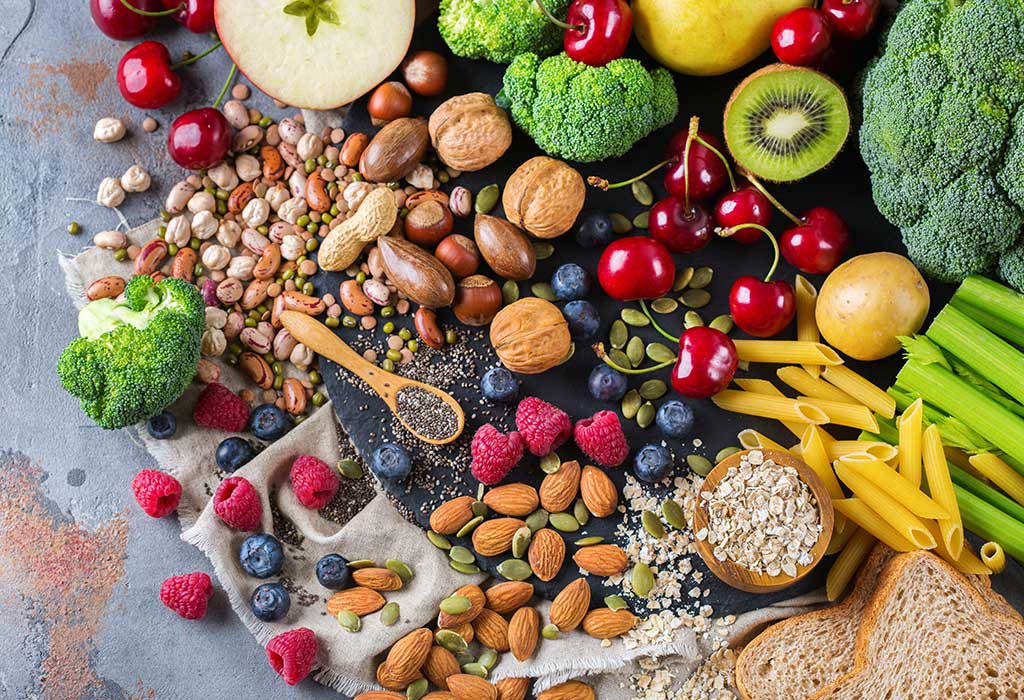
Almond, pumpkin, corn, collard, red bell pepper, and soy-based foods are examples of vitamin E-rich foods. According to research, Vitamin E or tocopherol works synergistically with Vitamin C to protect against UV radiation or sun damage.
Since most of the antioxidant- and vitamin-rich foods are mainly fruits and vegetables, it is essential to consume fruits and vegetables as suggested to have young looking skin!
Sugar
Sugar, as many people already know, is bad for your health because it raises your blood sugar level, which can lead to obesity, diabetes, heart disease, and other metabolic diseases. But it's also bad for your skin.
Sugar, in any form, has an impact on the two main causes of acne: hormones and inflammation. When you consume refined and processed carbohydrates, such as white sugar, your blood sugar levels rise faster, and your pancreas responds by releasing insulin. By avoiding sugar, you may be able to reduce the amount of insulin your body produces, which will reduce the oil and acne production.
Desserts such as cakes, tarts, cookies, 'traditional' kuih, and bakery products are high in sugar. Our daily staple foods are also high in refined carbohydrates or refined sugar. White rice, white bread, noodles, and flour-rich foods are all high in refined carbohydrates, which can harm the skin condition in the long run.
In conclusion, eating a healthy and well-balanced diet is the best way to achieve younger-looking skin. Consuming a lot of fresh products, limiting processed foods, oily foods containing trans fat, and sugary foods will help you not only have younger looking skin but also a healthier body!
References
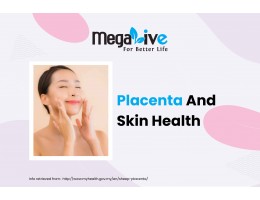
The placenta is an organ that connects the foetus to the mother. It transfers oxygen and nutrients to the foetus and removes foetal waste products to the mother. When the baby is born, the placenta will also be discharged from the mother’s body. There has been a growing interest in placenta extraction as it is said to have high nutritional value. The nutritional substance includes cytokines, hormones, bioactive peptides, enzymes, growth factors, vitamins, and minerals.
Culturally, humans rarely consume placenta, but recently there has been growing interest in consuming placenta, be it from humans or animals. Mammals have been consuming placenta since years ago; it is called placentophagia, while in humans it is called placentophagy. The placenta could be served raw, cooked, or encapsulated and taken as a supplement as it contains various nutritional benefits.
Rave on this started when many Hollywood celebrities started using placenta therapy as part of their skincare routine treatment. Celebrities like Kim Kardashian, Victoria Beckham, and even male celebrities like Harry Styles from One Direction have said they have been using this for their skin to get baby-soft skin.
Placenta consumption in Malaysia.
In Malaysia, it is rare for people to consume raw placenta. Usually, it comes in health supplement form and is derived from deer or sheep. Hence, as it is in health supplement form, any products containing placenta extract in a pharmaceutical dosage will require to be registered with the Drug Control Authority (DCA) before they are sold or used in Malaysia.

Benefits of placenta consumption.
Findings from research reported that nutrients that are delivered via the placenta could be retained even after the process of delivering the baby. The research also stated that the placenta contains collagen, elastin, laminin, and vitamins such as B1, B2, B3, B4, B5, B6, B7, and B12. All these vitamins, better known as B complex vitamins, play roles in cell metabolism, cell division, cell development, and energy production.
Due to this aspect as well, it is said that it gives a lot of benefits to skin health. Placenta is even used in clinical settings, such as for burn injuries and wound healing. In one study, researchers compared the efficacy of topical placental extract dressings versus povidone iodine dressings in diabetic wounds in a variety of patients. Placenta wound dressings could significantly accelerate the rate of wound healing when compared to povidone-iodine dressings as they contained amino acids, vitamins, and nucleotides, which accelerated wound healing recovery by seven to ten days.
Due to all these effects, many skincare products have recently incorporated placenta, be it from sheep or deer, in their skincare or supplement products.

Caution with regard to placenta in the supplement
When it comes to placenta consumption as a health supplement, it is evaluated based on its safety of use and product quality. To be safe, sheep placenta products must be hormone-free. Because placenta typically contains hormones such as testosterone, oestrogen, and progesterone, being hormone-free is much more important for a placenta-based supplement. To confirm whether the products you are considering or consuming have been notified by the Ministry of Health, you can conduct an online product search on the National Pharmaceutical Registration Agency (NPRA). However, if the product is not listed in the DCA, it is not recommended that you consume it because its safety and quality have not been evaluated, and it may pose a health risk.
References
-260x200.jpg)
But, what if it is not in good condition? Is it hormonal in nature? Is it related to food? Is it hereditary? Is it any of these?
Yes, it is indeed all of these!
Skin that appears younger is closely related to lifestyle and genetics. According to research, there is a gene in the human body that controls our skin condition. Have you ever wondered why certain people of similar age but different appearances appear younger than their actual age while others appear older? The study by dermatologist professor Alexa B. Kimball from Harvard revealed that this has something to do with gene expressions.
According to the study, people with rapid gene expression speed up the skin-repairing process when exposed to external or internal stress, which is why they can maintain younger-looking skin. It has also been observed that some people who appear young have rapid gene expression that mimics those who are younger than their chronological age. According to the professor, the skin appears younger because it behaved younger (1)!
To elaborate, the one described above is known as intrinsic skin ageing, and it represents chronological ageing, with the same pattern affecting all internal organs. Extrinsic skin ageing, also known as aged skin, is caused by external factors such as environmental influence, particularly chronic sun exposure and ultraviolet (UV) irradiation, but also smoking, pollution, sleep deprivation, and poor nutrition. As a result, when it comes to skin, the best way to avoid harm is to avoid all of these extrinsic factors (1).
A study that compared sun-exposed skin (face and forearm) to sun-protected skin (buttock) among women aged 20 to 70 years old discovered that ultraviolet (UV) exposure is a major driver and accelerator of skin ageing. Although sun exposure without any skin protection, such as sunscreen, is harmful to the skin, there is a recommended amount of time spent outdoors without sunscreen so that UVB from the sun can activate vitamin D3 in the skin. The recommended exposure time is 5 - 30 minutes between 10 a.m. and 3 p.m., at least twice a week, to the face, arms, legs, or back (2). In Malaysia, where the weather is sunny all year, excessive sun exposure can cause skin damage. As a result, if one of your 2021 resolutions is to avoid sun damage, you should start wearing sunscreen religiously!
Apart from smoking and pollution, which can both cause skin damage, sleep deprivation can also cause skin to appear older. Sleep serves as a reset button for our entire health, including our skin. During sleep, the blood flow to the skin increases, and the organ rebuilds collagen and repairs UV damage, reducing wrinkles and age spots. According to research, sleep deprivation affects wound healing, collagen growth, skin hydration, and skin texture. Inflammation is also higher in sleep-deprived individuals, causing acne outbreaks, eczema, psoriasis, and sin allergies. To combat this, health experts recommend 7 to 9 hours of beauty sleep per day to achieve fluffy baby skin (3,4)!
Poor nutrition is also a major contributor to the appearance of older skin, and the worst culprit of all is sugar! Glycation is the process by which sugar interacts with skin. Younger-looking skin is always associated with firm and elastic skin, which refers to the cross-linking structure of skin fibres. This structure can repair itself naturally; however, when sugar is consumed, the glycation process renders the structure and renders the skin unable to remodel into its original structure. As a result, the youthful skin condition has vanished! This explain, sugar consumption is not only bad for metabolic conditions like diabetes mellitus, but also for skin conditions.
To summarise, the skin is the largest and most delicate organ; it may appear strong and capable of withstanding all of the external and internal harm that we inflict on it, but it, too, requires pampering. A good skincare routine will help with its condition, but it also requires good food, hydration, and sleep to keep everything in check and balance!
References
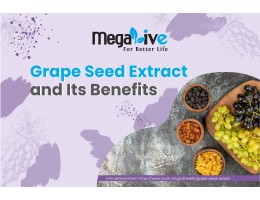
Numerous studies have shown that grape seed extract contains a high level of antioxidants. Using punctured wounded mice, researchers discovered that mice treated with GSE in the wound affected area grew tissue faster than mice treated with only normal saline. Another difference between GSE-treated mice and placebo-treated mice was more organized tissue formation and a higher rate of collagen deposition.
Topical application of 2% GSE cream in the area of a post-surgery surgical wound heals the wound completely in an average of 8 days, compared to 14 days for placebo. This is due to GSE's vascular endothelial growth factor (VEGF) properties, which promote the regeneration of damaged blood vessels while increasing the amount of free radicals present at the wound site. Free radicals aid in the killing and removal of pathogenic bacteria and endotoxin from the site, as well as in the healing of wounds.
Apart from wound healing and skin health properties, it also has anti-ageing properties. GSE proanthocyanidins delay skin ageing by reducing lipid oxidation on the skin structure.
Cardiovascular and antihypertensive properties.
Cardiovascular disorders (CVD) are among the major problems that arise due to modern, unhealthy lifestyles, which are the primary cause of death worldwide. It is a disorder that affects the condition and function of the heart and blood vessels in general. Changes in these two can result in cardiac arrest, heart stroke, hypertension, chest pain, and other complications. Studies show that GSE may prevent atherosclerosis (a condition where there is a build-up of fats, cholesterol, etc. in the blood vessel walls, which can restrict blood flow), inhibit or limit the oxidation of LDL (bad cholesterol), reduce inflammation, inhibit platelet aggregation, and lower blood pressure. It lowers blood pressure by suppressing oxidative stress and inhibiting the angiotensin-converting enzyme (ACE) and nitric oxide, which mediate vasodilation, hence making the constricted blood vessels dilate and improving blood pressure.
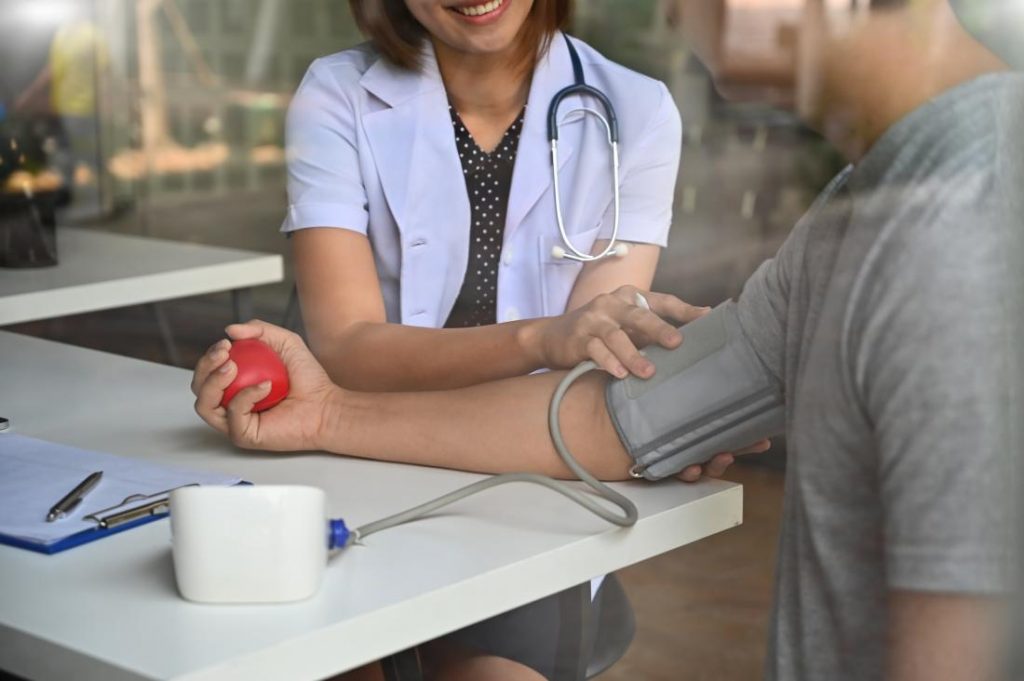
Antimicrobial activity
GSE has been shown to have antimicrobial properties; for example, when applied topically, resveratrol in GSE increases the production of cathelicidin, which inhibits the growth of Staphylococcus aureus. In another study, quercetin, caffeic acid, and quercetin-3-0-rutinoside in GSE were responsible for the inhibition of Listeria monocytogenes. It is also worth noting that GSE had the highest inhibition activity against almost all Listeria species. The review on the benefits of GSE also reported that the antimicrobial effect of GSE is attributed to changes in cell morphology and DNA content.
Cosmetic and nutraceuticals
Skin ageing is a natural process which occurs due to the external and internal factors involving genetic, hormonal, and environmental factors. GSE is rich in proanthocyanidin help to reduces the lipid oxidation of cellular structure of the skin and inhibit the production of free radicals. A study was carried out in which the anti-ageing effect of GSE was investigate. The study concluded that GSE has a promising role as an anti-ageing compound.
GSE help skin structure by strengthening the collagen-based tissue (by increasing the collagen cross links). It also increases the synthesis of collagen and the conversion of collagen from soluble into insoluble one.
In conclusions,
GSE has various benefits to health due to its high antioxidant properties, it is able to scavenge the free radicals which an essential feature that could help with various body functions.
References
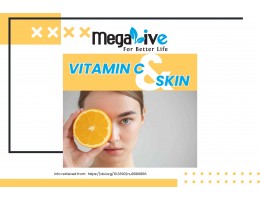
Vitamin C can be said to be the most popular micronutrient of all. It serves various functions, from immune health to skin health. As of late, many skin care products have incorporated vitamin C as one of the ingredients, or it stands alone in skincare products. Many studies found that topical application of vitamin C showed positive skin changes in improving skin complexion, improving skin hydration, fading out hyperpigmentation, and reducing the appearance of under-eye circles.
But, according to the study, there are various hindrances to the absorption of vitamin C applied topically, such as skin pH, penetration of vitamin C into skin layers, oxidation due to exposure to harsh environments before the skincare is even applied to the skin, and many more.
Which is why people started to dig? What about the consumption of vitamin C? Will it help with skin health even better?
A study on the roles of vitamin C in skin found that the consumption of vitamin C helps with skin health via various pathways.
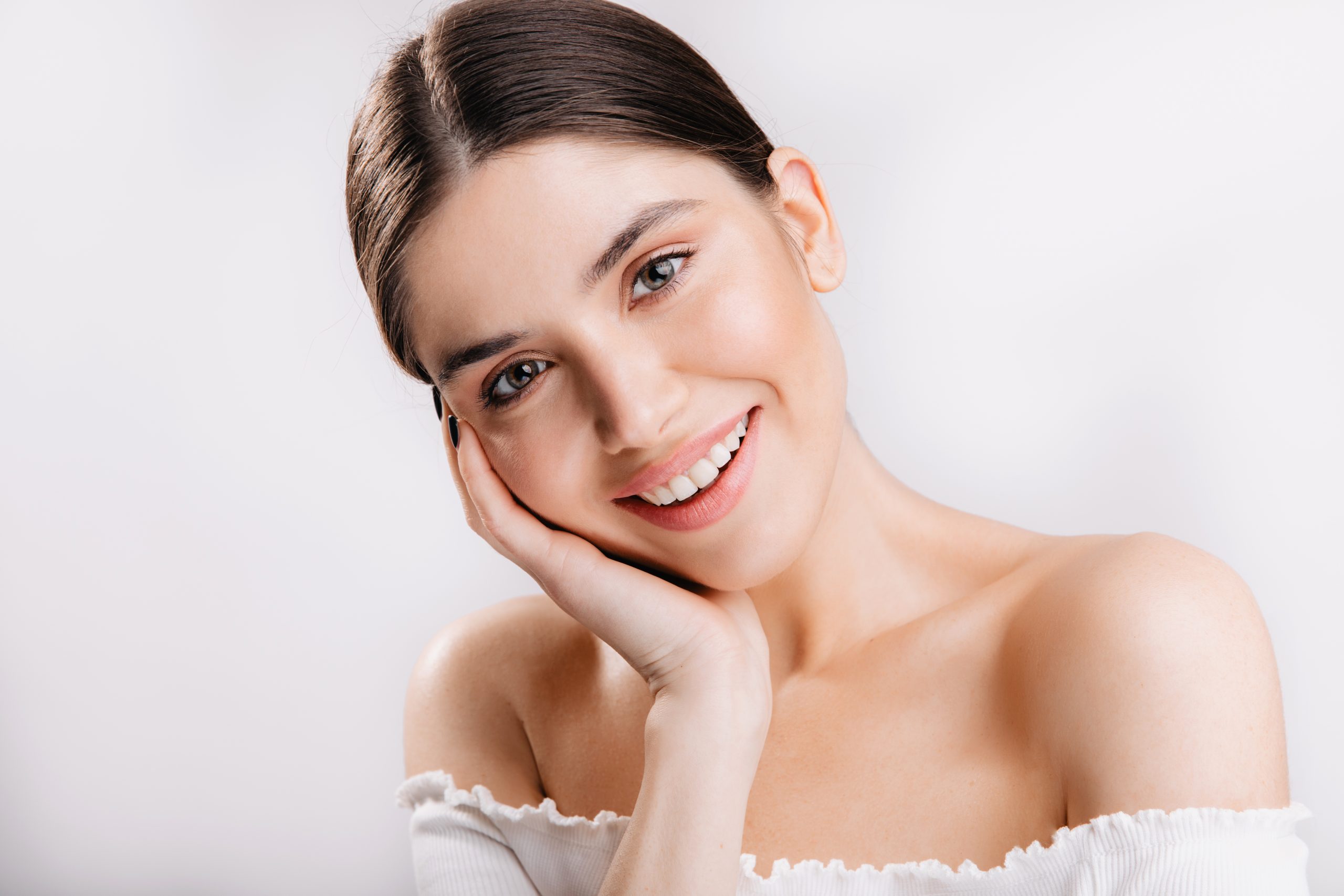
The promotion of collagen formation
Vitamin C acts as a co-factor for the proline and lysine hydroxylase enzymes that stabilise the collagen structure in skin. In the skin, collagen formation is carried out mostly in the dermis; it requires the enzyme lysine hydroxylase to form collagen, which is dependent on vitamin C. Which is why consumption of a sufficient amount of vitamin C helps with intact-looking skin due to the formation of collagen.
The ability to scavenge free radicals and dispose of toxic oxidants
Another important role of vitamin C is that it acts as a potent antioxidant, which can neutralise and remove oxidants from environmental pollutants and after exposure to ultraviolet (UV) radiation. But most intervention studies are carried out to see the effect or prevention of the damage using a cocktail of other ingredients as well (such as glutathione and vitamin E). Which is why it is said that vitamin C is particularly effective when it is used in conjunction with vitamin E.
Inhibition of melanogenesis
Vitamin C and its derivates, including the weak one (magnesium phosphate ascorbyl derivatives), have been shown to treat skin hyperpigmentation in conditions such as melisma, better known as age spots. This is due to the fact that it has been shown that it reduces melanin synthesis in the skin by interfering with the action of tyrosinase (the rate-limiting enzyme in the production of melanin).
These are all pathways through which vitamin C could help with skin health. During the course of life, the skin is exposed to various challenges that affect its structure, function, and appearance, including:
Ageing: loss of elasticity and wrinkle formation
Exposure to elements leading to discoloration, dryness, and accelerated wrinkles.
Chemical insults such as soaps, hair dyes, and detergents
Direct injury, such as wounding or bleeding.
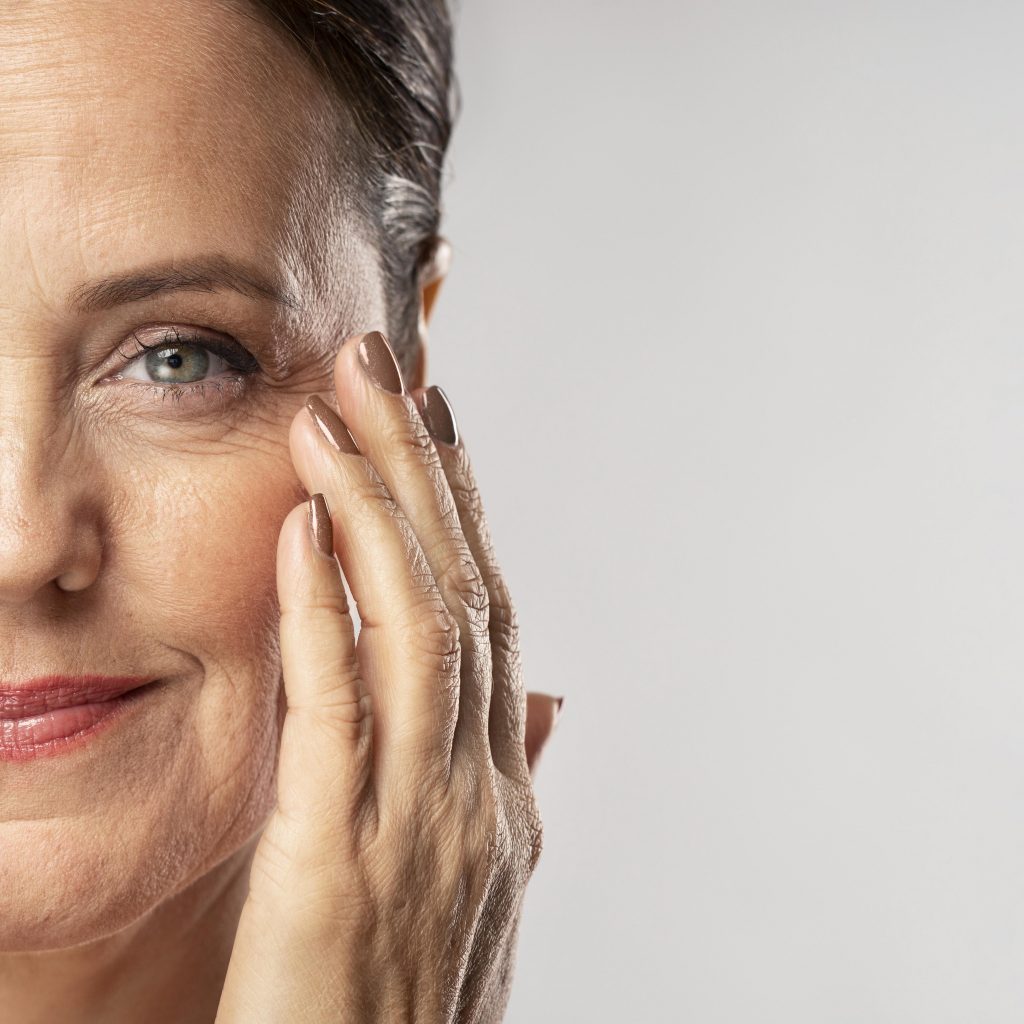
With all the factors from internal and external being addressed, it is thought that it can make things clear that the consumption of vitamin C is able to help with the prevention of further skin damage but at the same time must limit or reduce external factors that cause harm to skin; after all, prevention is better than cure, right?
Apart from this, 16 studies that investigate the consumption of vitamin C supplements or foods show that it improves skin appearance by improving skin elasticity, facial wrinkling, roughness, and discoloration.
Another double-blind nutrition intervention using cocktails of supplementation such as that high in antioxidants such as 10mg trans resveratrol, 60 mcg selenium, 10 mg vitamin E, and 50 mg vitamin C in papaya extraction among populations between 40 and 65 years old shows improved skin surface, brown spots, evenness, moisture, and elasticity after 90 days of supplementation.
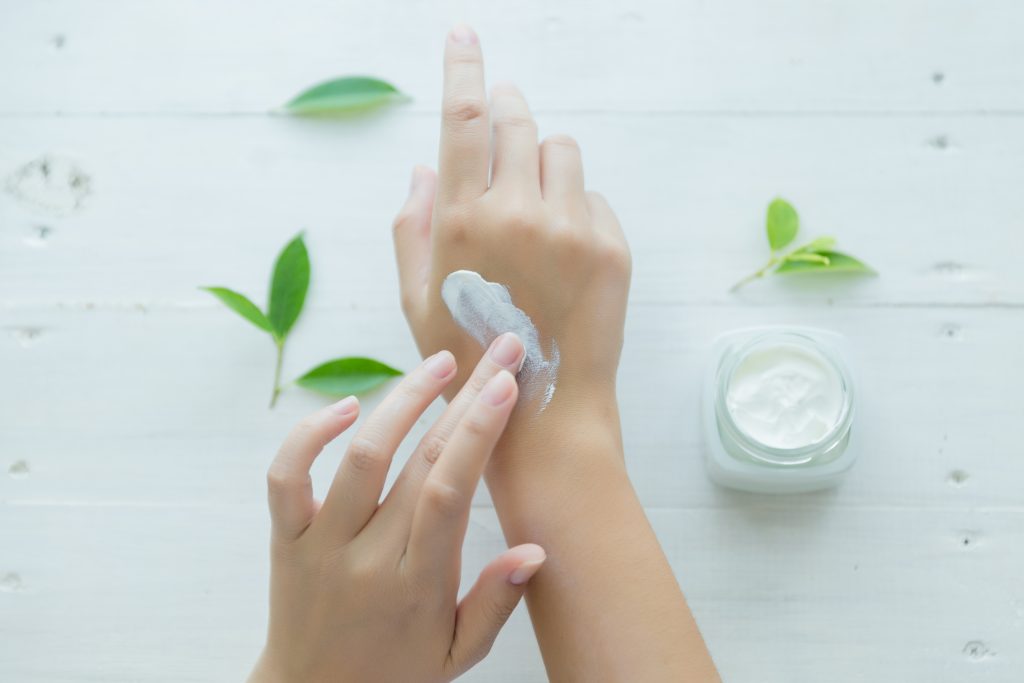
Based on all these data, the study stated that the efficacy of consumption of vitamin C is better at improving skin health as compared to topical application only. As the efficacy of topical application is based on the prior skin condition. In one study, it was suggested that when the health status is already optimal, meaning there is enough vitamin C, the topical application of vitamin C will not be absorbed into the skin. Hence, ‘beauty from the inside" via nutrition may be more effective than topical application.
References
Pullar, J. M., Carr, A. C., & Vissers, M. (2017). The Roles of Vitamin C in Skin Health. Nutrients, 9(8), 866. https://doi.org/10.3390/nu9080866.
Radiance by WebMD. Benefits of Vitamin For Your Skin Health. https://www.webmd.com/beauty/ss/slideshow-benefits-of-vitamin-c-for-skin (Retrieved on May 3rd, 2021).
11 Reasons to add vitamin C serum to your skincare routine. https://www.healthline.com/health/beauty-skin-care/vitamin-c-serum-benefits#how-to-use (Retrieved on May 3rd, 2021).
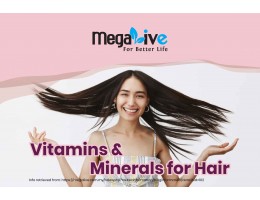
There are many factors influencing the number of hair falls, from disease-related symptoms to simply nutrient deficiency. Some commonly heard causes of hair falls are alopecia, thyroid problems, and lupus. Which is why it is important to know how much hair falls are normal and when you should go and seek treatment.
According to the American Academy of Dermatology, common hair falls per day are about 50 to 100 strands of hair, as we have more than about 100 000 hair follicles on the head alone. Thus, losing about 50 to 100 strands of hair per day will not cause you baldness, patchiness, or spots, but of course, if you have longer hair, losing hair is more noticeable as compared to if you have shorter hair. Also, the formation of spots, patchiness, baldness in your hair area, and the pattern of clumps of hair loss are signs that you need to seek the advice of a primary care doctor or dermatologist.

Generally, according to scientists, it is hard to quantify the normal number of hair losses since it still depends on gender, the way hair is styled, the frequency of hair styling, the frequency of hair colouring, washing, bleaching, brushing, and heat styling. It is also noted that women tend to lose more hair than men, as 40% of women style their hair a lot more than men, and because women experience certain life events that make them lose more hair, such as during pregnancy, postpartum, and menopause.
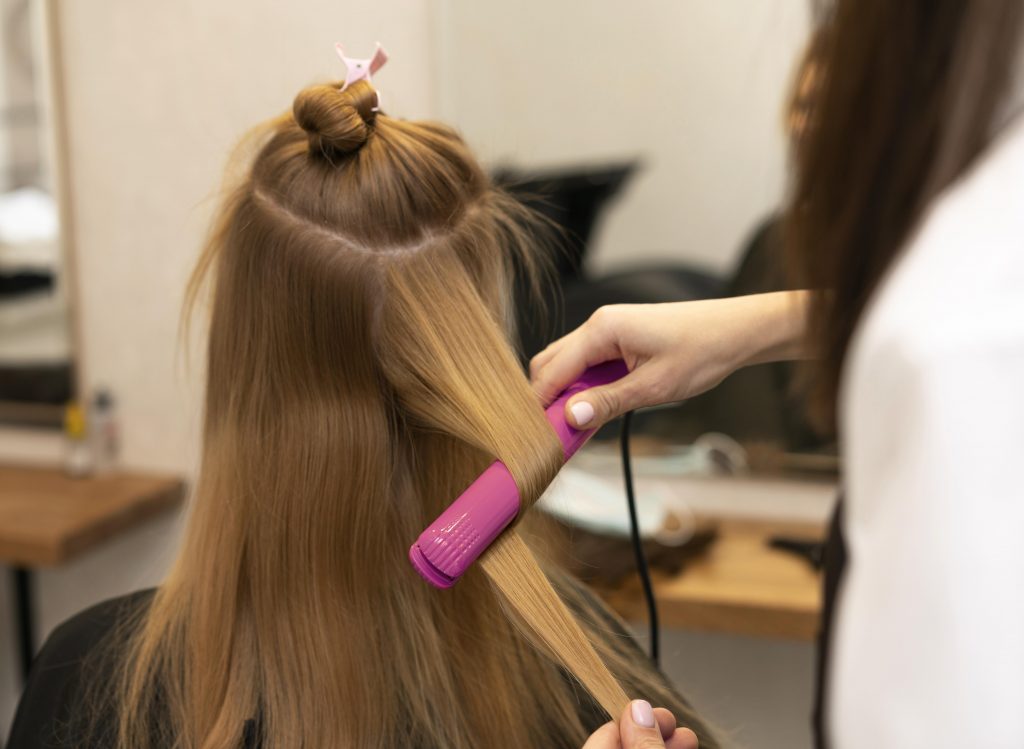
But if you are experiencing more hair loss than usual and it is not something due to diseases or life events that makes you stressed, you might need to find a solution to make your hair grow healthier again!
The answer to this is to improve your diet!
According to studies, minerals and micronutrients such as biotin are responsible for keratin production, which will help with hair growth. Vitamin C acts as a strong antioxidant to scavenge free radicals in hair follicles, resulting in strong hair roots. It also helps to produce collagen, which strengthens and prevents hair from becoming brittle and breaking. Vitamin C also helps to absorb more iron into the body, which can prevent anaemia, which can lead to more hair loss.
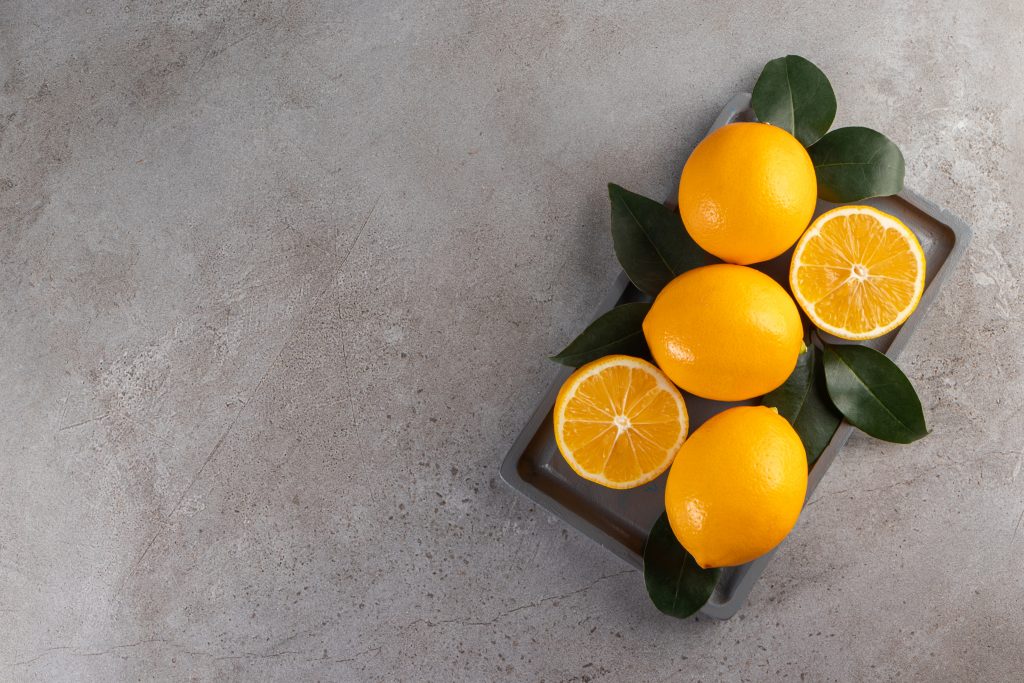
Another important nutrient is vitamin A. Vitamin A is abundant in yellowish-orange foods, such as carrots, but it is also present in greenish foods, such as spinach. It helps skin glands produce sebum, which will make hair less frizzy, brittle, and easily broken. Although vitamin A can improve your hair condition, too much vitamin A might be dangerous to your body and harm your hair! So, consume vitamin-rich foods moderately.
Zinc is a mineral that is essential for hair growth and repair. It also helps to keep the oil glands around the follicles working properly. Zinc-rich foods such as oysters, spinach, beef, and meat help reduce hair loss caused by zinc deficiencies.
In conclusion, identifying the type of nutrient that is beneficial for your hair health might give you an idea of what you can improve on and what you are lacking in your diet. In an effort to improve hair health, a hair care routine, such as washing hair when needed, avoiding heat styling and excessive hair styling, and avoiding exposure of hair to colourants, chemicals, etc. that can harm the hair for some time, can help improve its condition.

Collagen is a type of protein that is necessary for formation of skin, nails, hair, cartilage, bones, teeth, and joint. It is in most of the organs in the body. It is the tissue that holds ligaments, joints, and bones together. Some collagen acts as a protective layer for organs in the body, such as the kidneys.
As we age, the production of collagen in the body decreases, it causes skin to become wrinkled. For certain people, even when they are still young due to exposure of skin to various harsh environments and conditions both internally and externally, collagen level in skin tend to diminish even quickly.
Collagen and skin
Collagen is the central element in the dermis layer (one of the skin layer), it comprises about 70%-80% of skin. Whenever skin is wounded, collagen helps in wound healing through providing an ideal environment for cells to proliferate, which will help with the healing process. It also plays a significant role in all phases of wound healing, including haemostasis, inflammation, proliferation, and remodelling.
Studies shows that application of collagen in wounded skin is very beneficial since the collagen is highly porous and have interconnected pore structure. It is said that collagen is beneficial to wound healing to the extent of, there is study noted that collagen potentially can be used for skin substitute in full thickness wound healing.

Collagen and hair
Building block of hair is protein keratin, by consuming collagen rich food and/or collagen supplement, it will then be break down into variety types of amino acids compound.
There are 11 types of non- essential amino acids, which body can produce itself, and there are 9 types of essential amino acids which need to be consumed from diet since body cannot produced it. Collagen is made up from three types of essential amino acids, which is why it is best to consume collagen, collagen rich foods, or variety of protein rich foods, so you may get different types of amino acids compound especially the essential amino acids compound which body cannot synthesized, so that we can improve level of collagen in the body.
Collagen helps to fight damage to hair follicles by functioning as antioxidants which helps to fight free radical. Free radical could develop due to stress, smoking, dietary habits and many more. These are all factors that we are at risk of everyday, by consuming collagen it helps to reduce damage in the hair follicles thus lead to a healthier hair growth. It may also help to prevent thinning due to ageing and slow down the appearance of greying.

Collagen and nails
A study that was conducted among men and women who experience brittle nail syndrome, where their nail exhibits rough surface, raggedness, and peeling, noted that consumption of collagen promoted an increase of 12% nail growth rate and a decrease of 42% in the frequency of broken nails. Additionally, 64% of participants experienced an improvement 4-week post treatment. Most participants (80%) agreed that the use of collagen help with their brittle nail syndrome.
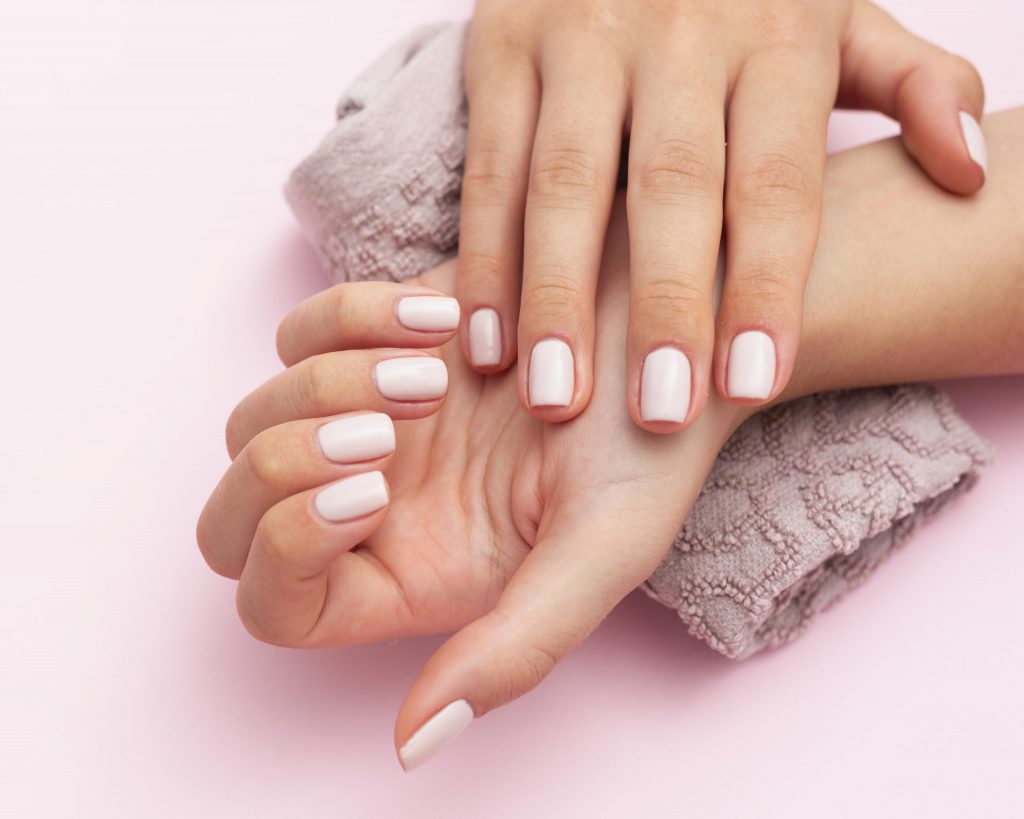
In conclusion, collagen consumption may helps with hair, nails, and skin condition since it is the building block of it. So, apart from practicing ‘prevention is better than cure’ measure once you have seen the symptoms in your hair, skin and nails, it is still not too late to help it with collagen.

Collagen is a fibre-like structure that is used to make connective tissue, which connects other tissues together. It is a major component of bone, skin, muscles, tendons, and cartilage. Collagen is a component that helps make tissue strong, resilient, and able to withstand stretching (1).
Although the saying that our bodies make less collagen as we age is true, the production of collagen drops most not only because of this but also due to excessive exposure to the sun, smoking, including secondhand smoke, excessive consumption of alcohol, lack of sleep, and lack of exercise. As the collagen levels in our skin diminish, the deep skin layers change from a tightly organised network of fibres to an unorganised maze. Environmental exposure to the skin, such as harsh weather, can also damage collagen fibres by reducing their thickness and strength, which can lead to wrinkles on the skin surface (1).

Research on collagen supplementation focuses mostly on joint and skin health. Although studies pertaining to this using human subjects are still lacking, some randomized controlled trials have found that collagen supplementation improves skin elasticity. In one study, women who took a supplement containing 2.5–5 grammes of collagen for 8 weeks experienced less skin dryness and a significant increase in skin elasticity as compared to those who did not. Another study found that women who consumed it for 12 weeks experienced increased skin hydration and a significant reduction in wrinkle depth as compared with a control group (1, 2, 3, 4).
Trials on collagen supplements and joint health also found that they can improve joint mobility and decrease joint pain in people with osteoarthritis or in athletes (5). Collagen comprises about 60% of cartilage, a very firm tissue that surrounds bones and cushions them from the shock of high-impact movements, so a breakdown in collagen could lead to a loss of cartilage and joint problems.

Other than the consumption of collagen-based supplements, there are also foods that are rich in collagen or that encourage collagen production other than the lifestyle modifications mentioned above. foods such as tough cuts of meat full of connective tissue like pot roast, brisket, and chuck steak. However, a high intake of red meat is not recommended as part of a long-term healthy diet. Collagen is also found in the bones and skin of freshwater and saltwater fish. Bone broth, which requires animal bones to simmer in water with a small amount of vinegar for 4–24 hours, is also said to have high collagen properties. However, the amount of amino acids will vary among batches depending on the types of bones used, the cooking period, and many other factors. Other foods that can help with the production of collagen are foods that are rich in zinc, such as legumes, nuts, seeds, whole grains, and vitamin C-rich foods, such as citrus fruits, bell peppers, and tomatoes.

Although studies on the effectiveness of collagen for health are still lacking, many available studies have not shown negative side effects in individuals given collagen supplements (6). Thus, it is worth trying for its said benefits, especially if the benefits are your health concerns! But be sure to talk to your healthcare professionals about this based on your medication intake and your health issues before consuming any health supplement.
References
Kim DU, Chung HC, Choi J, Sakai Y, Lee BY. Oral intake of low-molecular-weight collagen peptide improves hydration, elasticity, and wrinkling in human skin: a randomized, double-blind, placebo-controlled study. Nutrients. 2018 Jul;10(7):826.
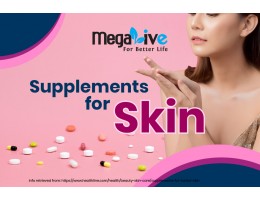
There are many supplements on the market formulated for various purposes. Knowing what to look for in your supplements help you make a better choice in choosing supplements for your health, here we share some of the tips in choosing supplements for your skin!
Vitamin C and antioxidants
Vitamin C has many functions in the body, including function related to the skin health. It acts as a co -factor in collagen to stabilize the collagen structure on the skin. Vitamin C is required in the formation of an enzyme which is essential in forming collagen, which explains why sufficient consumption of vitamin C helps with wrinkle free looking skin due to the formation of collagen.
When choosing vitamin C supplementation, it is best to choose natural vitamin C, that derived from plant based vitamin C rich foods such as guava, berries, orange, pomegranate, etc., this will give better absorption of skin as compared to synthetic vitamin C to the body and will also give various function of antioxidants properties to overall body health not only skin!
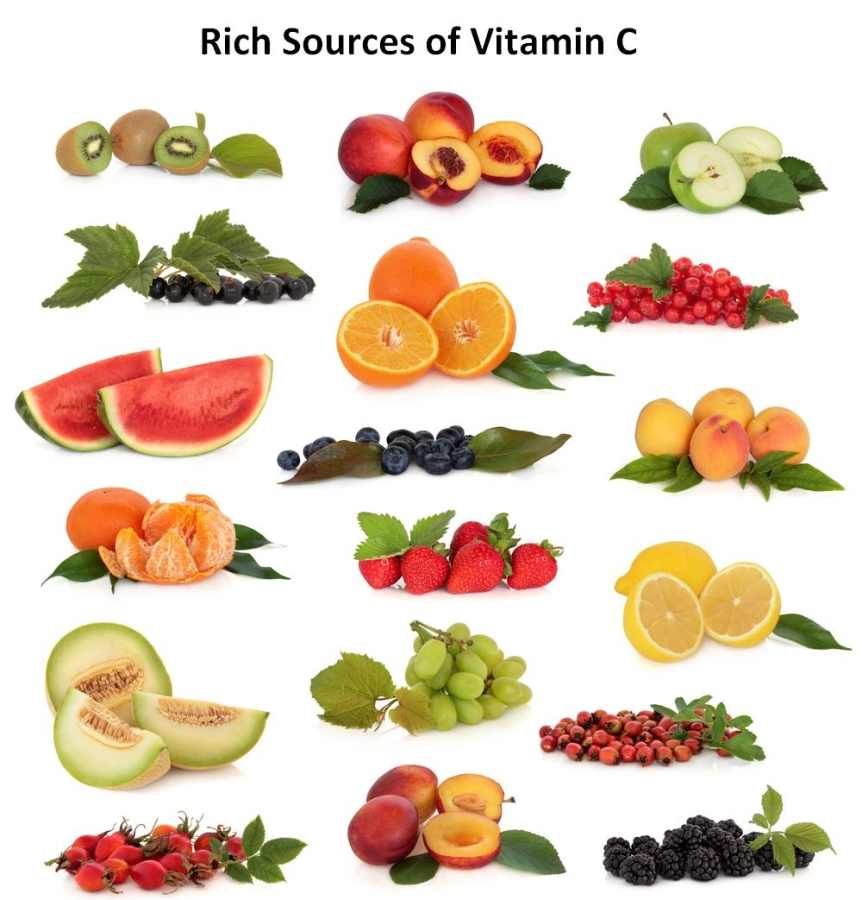
High dosage of vitamin C, does not necessarily means that it is better. We are recommended to consume about 70 mg of vitamin C daily according to the Ministry of Health. It can be consumed from fruits, vegetables, and fortified food, however, for certain people it is hard to consume fruits and vegetables on daily basis due to various reasons. Thus consumption of vitamin C from supplement can be used as an alternative.
Omega 3 Fatty Acids
Omega 3 fatty acids are usually referring to as good fat. It serves to regulate the skin’s oil production, improved balance hydration, subdue breakout and minimize signs of aging. Furthermore, it can also help to soften rough, dry skin, and have a soothing effect on irritation and dermatitis if apply topically. Omega 3 rich foods can improve the composition of skin by balancing its inflammatory response towards the effect of sun damage and also improve sensitive skin condition by making it less dehydrated and dry.
Omega 3 rich foods can be found in food such as cat fish, terubok fish, patin fish, mackerel, spinach, mustard green, tofu and tempeh. People who consume lack of fish in their diet or who does not consume fish at all are at risk of lacking omega 3 nutrient (DHA & EPA) in their body. Thus, should actually obtain this from supplement.

When choosing supplement with omega 3, it is important to make sure that the supplement has enteric coated technology which will allow the nutrients to metabolize at its designated place that is small intestine and will not be broken down by stomach acid. A good Omega 3 supplementation also must undergo molecular distillation process to avoid any contamination such as mercury contamination from the fish oil source.
Collagen
Our body can produce its own collagen, however the production of collagen gradually declined as we aged, which explains among the sign of aging is wrinkles, that is coming from skin that is less elastic, supple, and firm. We can get collagen from food and there are also foods which can stimulate production of collagen and break down existing collagen. Body makes collagen from combining proline and glycine (types of protein).Thus consuming food high with proline and glycine will help with restoring collagen level in the body.
Foods that are high with collagen are mostly diet from protein-rich foods such as bone broth, pork, chicken, beef, eggs, and fish. Plant based food also have added benefits to collagen rich food consumption since vegetables and fruits contain high level of antioxidants which can protect oxidative stress from reducing collagen.

Apart from these, you may consume collagen supplement for maintenance of your skin health and help with slowing wrinkle formation. It is hard to identify criteria for good collagen supplementation, but among things that one need to consider in choosing collagen supplementation is the other ingredients combining with it and for what purposes. Since combination of collagen with other ingredients might increase its bioavailability and making it has more functions not only to skin but also to overall body health.
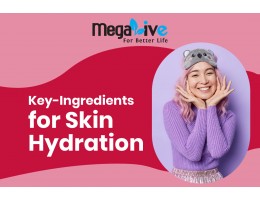
In general, there are three main types of skin conditions: oily skin, dry skin, and combination skin. Skin experts believe that each skin condition requires a specific level of hydration to maintain its healthy state.
A wide variety of products are available in the market, specially formulated to moisturize and hydrate the skin. However, it's essential to understand the distinction between moisturizing and hydrating the skin.
Hydrating ingredients are substances that can add water to the skin. These ingredients have the unique ability to draw moisture into the skin's layers.
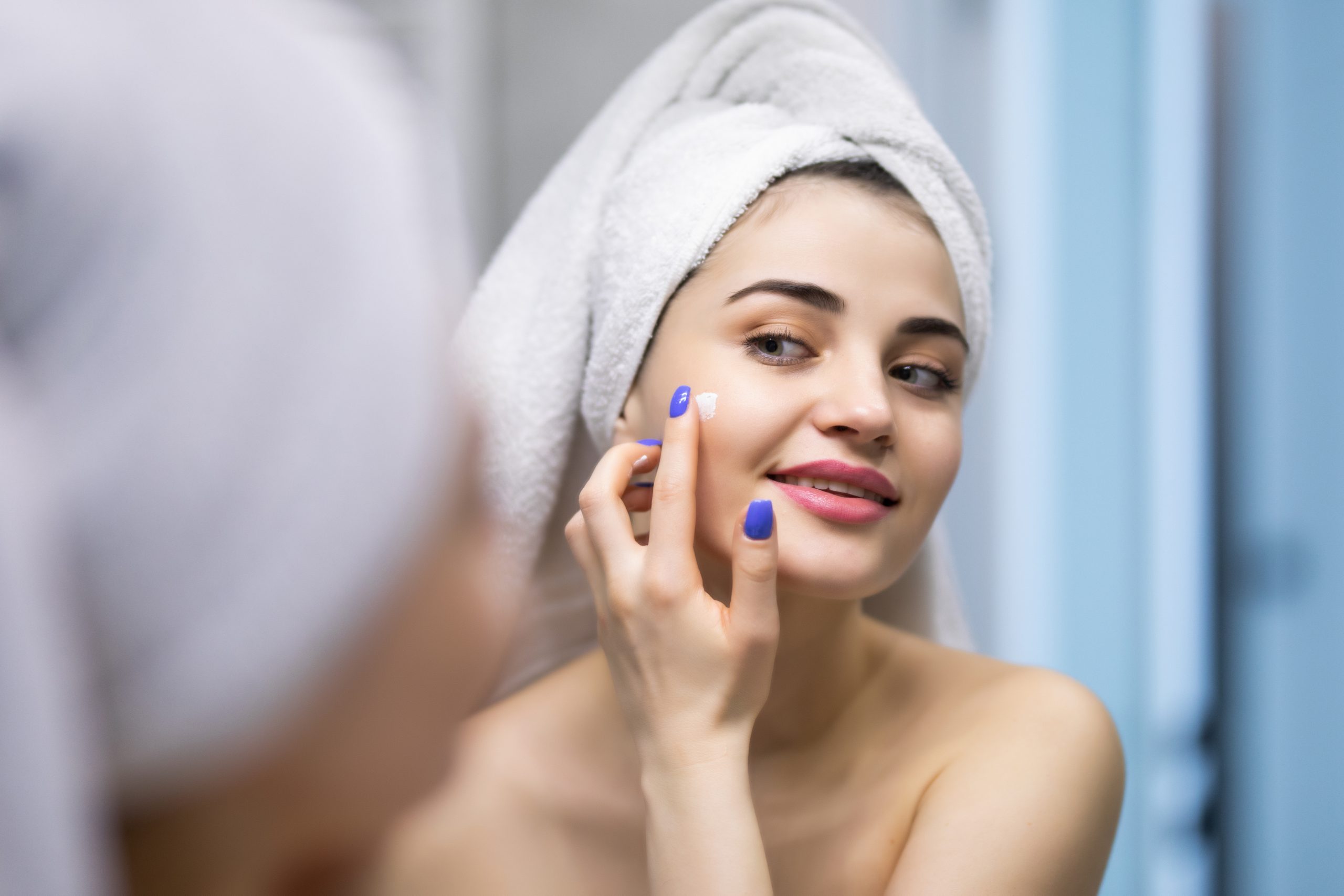
On the other hand, moisturizing ingredients are substances that help retain the skin's hydration by preventing Trans-Epidermal Water Loss (TEWL). TEWL is a process that leads to the evaporation of water from the skin.
Dry skin requires both hydrating and moisturizing ingredients to maintain its moisture and overall health. Conversely, for oily and combination skin types, the choice of skincare products should depend on the specific skincare regimen, ingredients, and the particular areas of the skin.
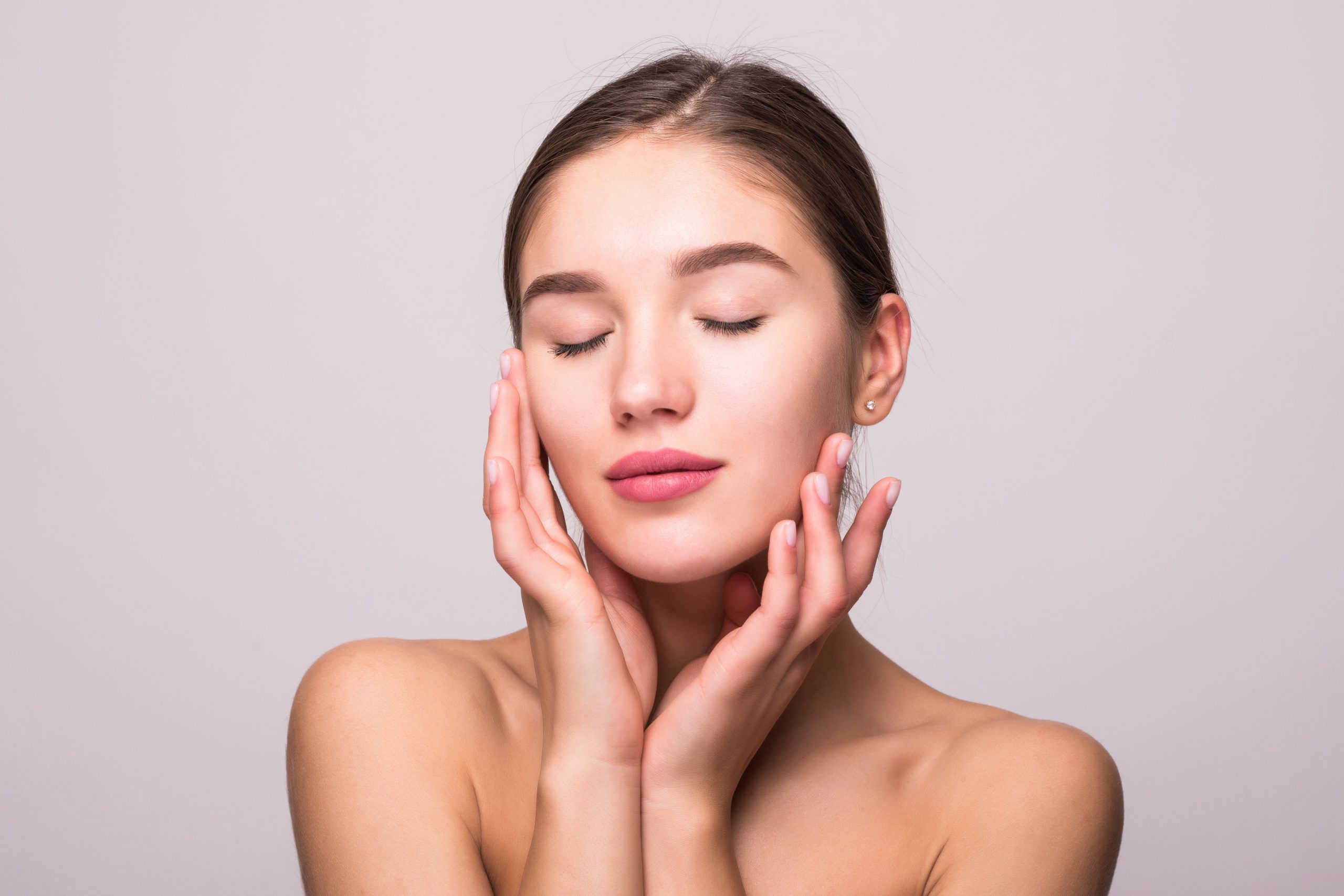
In summary, there are three primary categories of hydrating and moisturizing ingredients available in the market: humectants, emollients, and occlusives.
Humectants: These ingredients attract and retain water and moisture in the skin. They work by drawing water from the dermis into the epidermis. Examples include Glycerin, Honey, Hyaluronic Acid, Panthenol, Propylene Glycol, Butylene Glycol, and Hydroxy Acids like Glycolic Acid and Lactic Acid.
Emollients: Emollients are substances that enhance the skin's texture by filling the gaps between skin cells. They provide lubrication and impart a soft, smooth feel to the skin. Some common emollients are Dimethicone, Isopropyl Palmitate, Squalene, Ceramide, and Isopropyl Isostearate.
Occlusives: Occlusives form a protective barrier on the skin's surface, reducing Trans-Epidermal Water Loss (TEWL) and preventing water from evaporating into the environment. Examples include Mineral Oil,Lanolin Acid, and Lanolin.
Additionally, a newly discovered ingredient that has gained popularity in the skincare industry is ceramide. Many skincare companies have started incorporating ceramides into their formulations. Studies have shown that applying ceramides for just 24 hours can significantly reduce Trans-Epidermal Water Loss, a crucial indicator of skin hydration.
Furthermore, research has explored the relationship between oral consumption of ceramides and improvements in skin condition. Surprisingly, it has been found that consuming ceramides for 12 weeks can be especially beneficial for dry skin conditions when compared to a placebo.
Studies on the safety of ceramide consumption have concluded that ceramides are safe for oral consumption.
In conclusion, maintaining proper hydration and moisturization is crucial for healthy skin. A combination of emollients, humectants, occlusives, and ceramides is vital for maintaining the skin's barrier and moisture. Additionally, consuming supplements containing high antioxidant properties and ceramides can help improve skin condition.
References

This is not surprising, since in Malaysia if we look around us, we are still lacking healthy food option. For your information, the nationwide study mentioned above was conducted among adult above 18 years old (1). From this study you may deduce that how can our younger generation be able to consume vegetables if their parents or adults around them do not consume it?!
Anyone knows that the best food rich with all the micronutrients, macronutrients, and antioxidants are coming from plant-based food. Many studies have tried to use plant-based diet as an intervention method for various kind of diseases especially chronic diseases, and it works wonder! Thus, instead of using plant-based diet as an intervention when people are already sick, why not cultivate the habit of eating vegetables and fruits since young. The stigma that healthy food is not palatable and not delicious is way too yesterday for our brand-new generation. As an exemplary adult, we need to portray that eating healthy food and living a healthy lifestyle is the new cool!

Now, if you are parents or caregivers below are some tips you may try to make your children love vegetables. Remember, however it all start with you, you first must cultivate it then it will be easy peasy lemon squeezy for your children!
Tips #1 (2)
Provide fruits and vegetables as snacks. Keep fruit washed, cut up and in plain sight in the refrigerator. You may also make it compulsory for your family to eat vegetables every family time, it can be as simple as salad with dressings. You also can try and be creative by including at least one leafy vegetable for vitamin A such as spinach, broccoli, winter squash, and greens. As for fruits, try to include at least one vitamin C rich fruit such as guava, oranges, melon each day. You may also add vegetables as sides ingredients in your noodles, pasta, fried rice, cereals etc. If you are eating out, order vegetarian’s menu or simply greens in every meal either as side dish or as main, will also help!
#Tips 2 (2)
Another thing that you can start doing is when you buy your food stock. Includes your child fruits and vegetables preference when buying groceries. When shopping for food, start in the area of fresh fruits and vegetables. Avoid buying high-calorie foods such as chips, cookies, and candy bars. Your child may not ask for these treats if they are not in sight. Limit or eliminate how much fruit juice you give your child and make sure it is 100% juice, juice ‘drinks’ with plenty of sugar. Eat together whenever possible also helps in cultivating healthy food habit, since research shows that kids eat more vegetables and fruits and less fried foods and sugary drinks when they eat with their entire family.
#Tips 3 (3)
You may also try to consume kids’ friendly veggies and fruits recipe. Include your child in the process of making, will also help in making them interested with fruits and vegetables. These are some of things you can try in order to make your child enjoy vegies;
Smoothies creations, you can blend yogurt or milk fruit pieces and crush ice. Use fresh fruits in the smoothie, you may use fruits like bananas, berries, peaches, and/or pineapple. If you freeze the fruit first, you don’t even have to use ice!
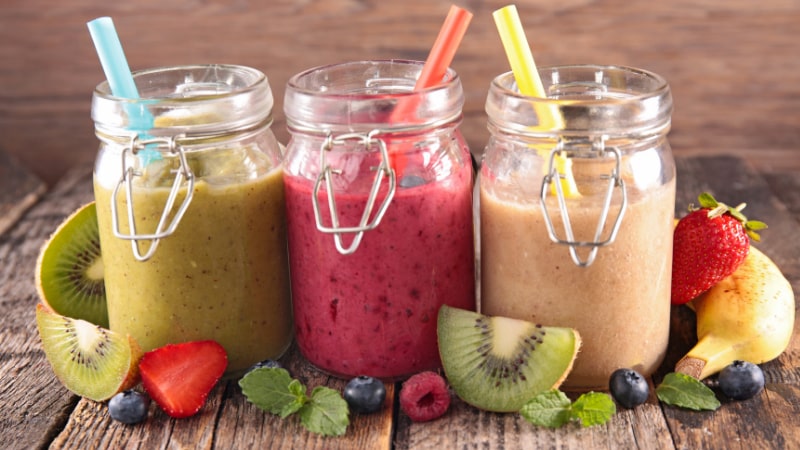
Delicious dippers, this is something that you can try to create at home, make your own salad dressings using herbs or garlic. Serve the dressings with raw vegetables like broccoli, carrots, or cauliflower. Fruit chunks go great with yogurt, cinnamon, and vanilla dip!
Personalized pizza is also something that you can create at home, you may use pita bread as the crust, or you can also buy the ready to eat pizza crust, and prepare variety kind of vegetables for the pizza. Vegetables like, bell pepper, broccoli, mushrooms, spinach, all sorts. Let your kids explore the ‘cooking’ and eat together will help in cultivating the habits of eating vegetables.
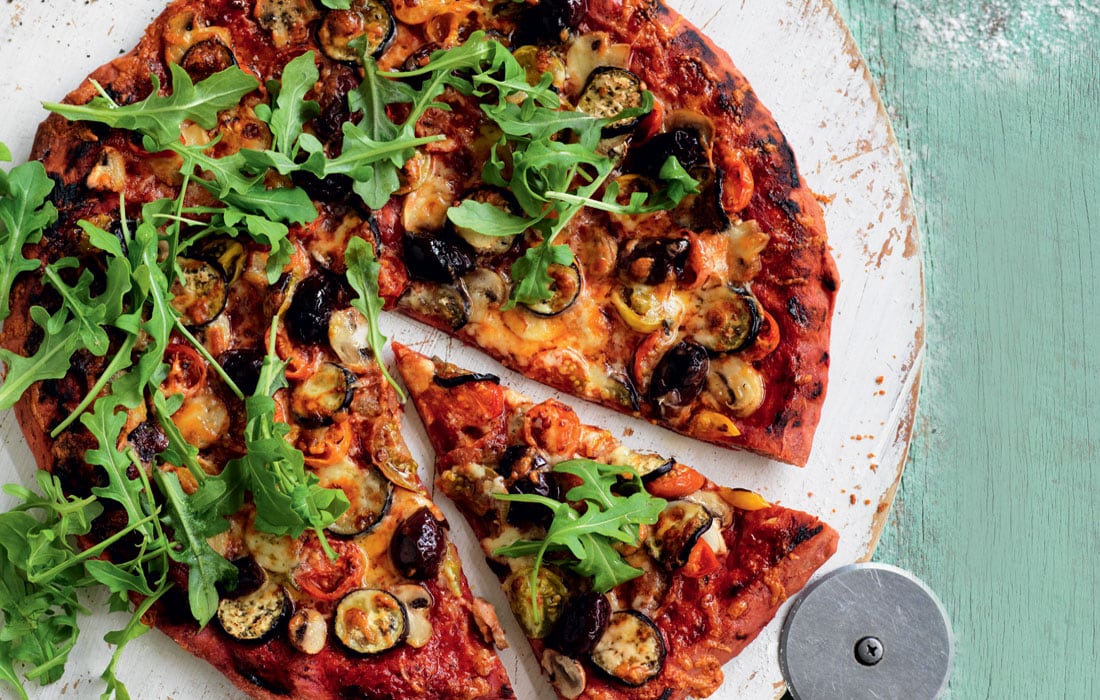
Caterpillar kabobs assemble chunks of melon, apple, orange, and pear on skewers for a fruity kabob. For a raw veggie version, use vegetables like zucchini, cucumber, squash, sweet peppers, or tomatoes.

In conclusion,
You can try and be creative as much as you can to develop your child habits of eating vegetables and fruit, but the most important one would be you have to be the role model yourself!
References
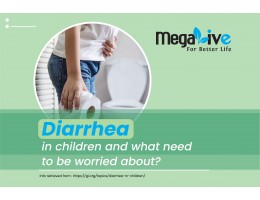
Diarrhea is characterized by frequent soft or loose bowel movements (poop). Most children experience diarrhea from time to time. It usually does not last long and usually resolves on its own, but in children, the period when they have diarrhea is critical because they may be losing too much water, which can lead to other health problems.
Among the dehydration symptoms that parents and/or caregivers should look for in children who have diarrhea are:

Diarrhea is usually caused by an infection, such as rotavirus, bacteria like salmonella, or a parasite like giardia. Aside from dehydration symptoms, it also includes vomiting, stomachache, headache, and fever.
It is also critical to seek medical attention right away if your child or baby exhibits any of the following symptoms:
It is best to prevent fluid loss when treating diarrhea in children or adults, whether in a clinical setting or at home.
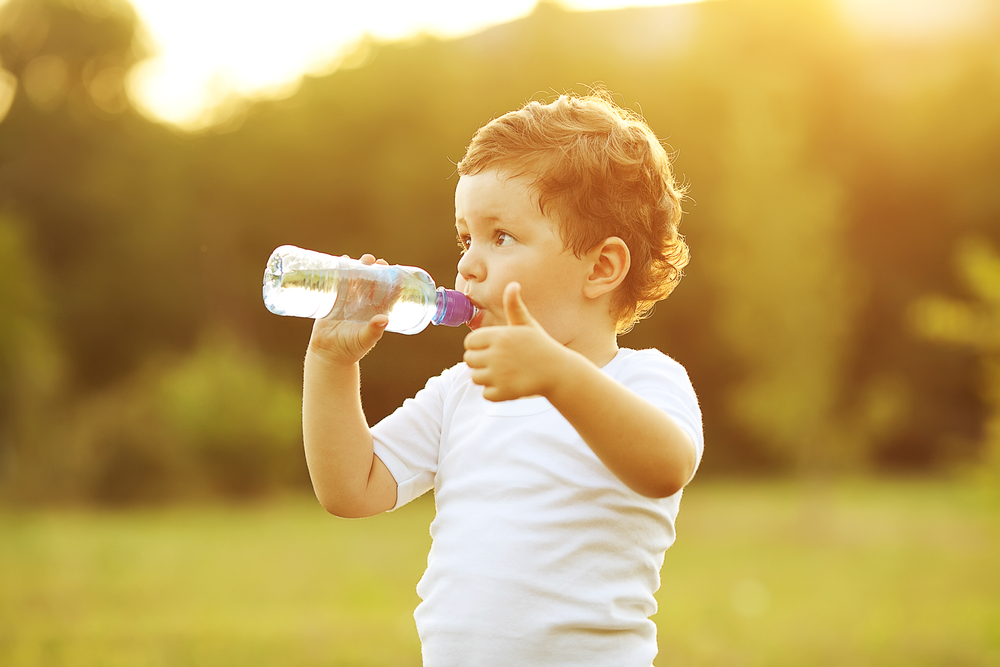
Here are some tips that parents and/or caregivers can use to prevent fluid loss at home:
In conclusion, diarrhea in children can be very serious and is quite common; some of the practices that parents may employ when dealing with children who frequently experience diarrhea include ensuring that their children's and caregiver's hygiene is always maintained. Ensure that food is stored at the proper temperature, particularly dairy and raw food products; that food is fully cooked; and that the home environment is clean, especially if there is a pet in the same household. Aside from these, taking probiotic supplements is beneficial to their gut health.
References
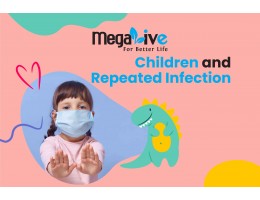
However, it is not practical to avoid your children from all the exposure altogether since exposure to all these things are somewhat things that build up their immune health stronger and better, but we must control the exposure and make sure that their immune health is strong enough to fight the infection.
Here are some tips that you may practice to help your children to stay as healthy as possible:



Most importantly, understand that frequent infections are very common in the first two years of life especially if they are in day care with many other children and after they no longer breastfed. All in all, all these will help them to make their immune health better but at the same time as a parents we need to help the children to build their immune health by providing nutritious foods, clean environment and instill good hygiene practice.
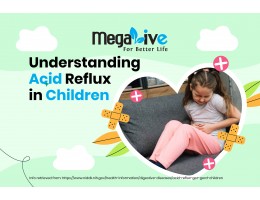
Acid reflux, also known as gastroesophageal reflux (GER), is a condition that affects both adults and children. While the fundamental mechanism remains the same, there are notable distinctions between acid reflux in adults and its manifestation in children.
In adults, reflux occurs when stomach contents, including stomach acid, flow back into the esophagus, leading to symptoms such as heartburn, regurgitation, and a bitter taste in the mouth.
This uncomfortable condition is not limited to adults; it can also affect children and even infants. However, due to the differences in the maturity of their digestive systems, the symptoms of GER can vary significantly depending on the child's age.
In infants, a certain amount of spit-up after feeding is common and referred to as GER. Nevertheless, if your baby experiences frequent vomiting accompanied by discomfort, feeding difficulties, or weight loss, it may signify a more serious issue than typical GER. Nevertheless, the underlying mechanism of GER in babies, children, and adults remains quite similar.
For babies, GER often results from their underdeveloped gastrointestinal tract, which is not as coordinated as an adult's. In contrast, children may experience GER due to factors like obesity, overeating, consumption of spicy or oily foods, intake of caffeinated or carbonated beverages, or the use of specific medications. Nonetheless, the root cause of GER in children is akin to that in adults: it occurs when factors induce relaxation of the muscular valve between the stomach and esophagus (known as the Lower Esophageal Sphincter or LES) or elevate pressure below the LES.
Symptoms in Children:
The most common GER symptoms in infants and children include:
Tips for Identifying and Assisting Children with GER:
When it comes to children, paying close attention to their complaints or observations is crucial. Children often struggle to articulate their discomfort or pain accurately. In addition to this, there are several strategies that can help manage GER in children:
For infants, elevating the crib or bassinet and holding the baby upright for 30 minutes after feeding can be beneficial, along with assisting them in burping.
In conclusion, acid reflux, a condition commonly associated with adults, can also affect children. However, children may struggle to describe their symptoms and understand what is happening to their bodies. The key lies in attentive observation and implementing the helpful tips mentioned above to provide relief and comfort to children experiencing GER.

What is asthma in children?
Asthma is a major non-communicable disease (NCD), affecting children and adults. It is a condition in which the airway in the lung narrows due to inflammation and tightening of the muscle surrounding the small airway. As a result, asthma symptoms such as coughing, wheezing, shortness of breath, and chest tightness developed. These symptoms are usually on and off, while the asthma disease itself is a long-term condition. Asthma triggers vary from person to person, but they can also be due to a viral infection (cold), dust, smoke, fumes, changes in the weather, grass and tree pollen, feathers, strong soap, perfume, animal fur, and many more.
Causes of asthma in children.
Although it is often difficult to find a single, direct cause, it is believed to have multiple complex causes. Many factors have been linked to an increased risk of developing asthma, such as
Prevention & Control of asthma
Asthma cannot be cured, but good management with inhaled medications can control the disease and enable people with asthma to enjoy a normal, active life.
There are two main types of inhalers:
People with asthma may need to use an inhaler every day. Their treatment will depend on the frequency of symptoms and the types of inhalers available.
It can be difficult to coordinate breathing using an inhaler, especially for children and during emergency situations. Using a "spacer" device makes it easier to use an aerosol inhaler and helps the medicine reach the lung more effectively.
People with asthma may need to use an inhaler every day. Their treatment will depend on the frequency of symptoms and the types of inhalers available.
It can be difficult to coordinate breathing using an inhaler, especially for children and during emergency situations. Using a "spacer" device makes it easier to use an aerosol inhaler and helps the medicine reach the lung more effectively.
Other than this, it is also best to avoid triggers for asthma. Triggers vary from person to person; as asthmatic children grow; parents should be able to identify things that trigger their asthma attack. It can be as simple as changes in weather, temperature, etc.
In conclusion, since asthma is a lifelong disease, it is best to manage or control it by avoiding triggers in children and by adhering to the medication based on a doctor's suggestion.
References

Stress can be defined as the body’s reaction to any change that requires an adjustment or response. The body reacts to these changes with physical, mental, and emotional responses. Stress is a normal part of life. You can experience stress from your environment, your body, and your thoughts. Even positive life changes such as a promotion, a mortgage, or the birth of a child produce stress.(1)
The human body is designed to experience stress and react to it. Stress can be positive, keeping us alert, motivated, and ready to avoid danger. Stress becomes negative when a person faces continuous challenges without relief or relaxation between stressors. As a result, the person becomes overworked, and stress-related tension builds. The body’s autonomic nervous system has a built-in stress response that causes physiological changes to allow the body to combat stressful situations. This stress response, also known as the “fight or flight response”, is activated in case of an emergency. However, this response can become chronically activated during prolonged periods of stress. Prolonged activation of the stress response causes wear and tear on the body – both physical and emotional.(2)
Stress that continues without relief can lead to a condition called distress – a negative stress reaction. Distress can disturb the body’s internal balance or equilibrium, leading to physical symptoms such as headaches, an upset stomach, elevated blood pressure, chest pain, sexual dysfunction, and problems sleeping. Emotional problems can also result from distress. These problems include depression, panic attacks, or other forms of anxiety and worry. Research suggests that stress also can bring on or worsen certain symptoms or diseases. Stress is linked to 6 of the leading causes of death: heart disease, cancer, lung ailments, accidents, cirrhosis of the liver, and suicide.(3)
Stress also becomes harmful when people engage in the compulsive use of substances or behaviors to try to relieve their stress. These substances or behaviors include food, alcohol, tobacco, drugs, gambling, sex, shopping, and the Internet. Rather than relieving the stress and returning the body to a relaxed state, these substances and compulsive behaviors tend to keep the body in a stressed state and cause more problems. The distressed person becomes trapped in a vicious circle.

It may seem that there’s nothing you can do about your stress level. The bills aren’t going to stop coming, there will be never be more hours in the day for all you errands, and your career or family responsibility will always be demanding. But you have a lot more control that you might think. In fact, managing stress is all about taking charge of your thoughts, your emotion, your schedule, your environment, and the way you deal with problems. The ultimate goal is a balanced life, with time for work, relationship, relaxation, and fun plus the resilience to hold up under pressure and meet challenges head on. (4)
Stress management starts with identifying the sources of stress in your life. This isn’t as easy as it sounds. Your true sources of stress aren’t always obvious, and it’s all too easy to overlook your own stress-inducing thoughts, feelings and behaviours. Sure, you may know that you’re constantly worried about work deadlines. But maybe it’s your procrastination, rather that the actual job demands, that leads to deadline stress.
To identify your true sources of stress, look closely at your habits, attitude, and excuses:
Do you explain away stress as temporary (“I just have a million things going on right now”) even though you can’t remember the last time you took a breather?
Do you define stress as an integral part of your work or home life (“Things are always crazy around here”) or as a part of your personality (“I have a lot of nervous energy, that’s all”)
Do you blame your stress on other people or outside events, or view it as entirely normal and unexceptional?
Until you accept responsibility for the role you play in creating or maintaining it, your stress level will remain outside your control.
Stress management strategy 1: Avoid unnecessary stress
Not all stress can be avoided, and it’s not healthy to avoid a situation that needs to be addressed. You may be surprised, however, by the number of stressors in your life that you can eliminate.
Learn how to say “no” – Know your limits and stick to them.
Avoid people who stress you out.
Take control of your environment – If the evening news makes you anxious, turn the TV off. If traffic’s got you tense, take a longer but less-traveled route.
Avoid hot-button topics – If you get upset over religion or politics, cross them off your conversation list.
Pare down your to-do list – Analyze your schedule, responsibilities, and daily tasks
Stress management strategy 2: Alter the situation
If you can’t avoid a stressful situation, try to alter it. Figure out what you can do to change things so the problem doesn’t present itself in the future. Often, this involves changing the way you communicate and operate in your daily life.
Express your feelings instead of bottling them up. If something or someone is bothering you, communicate your concerns in an open and respectful way.
Be willing to compromise. When you ask someone to change their behavior, be willing to do the same.
Be more assertive. Don’t take a backseat in your own life. Deal with problems head on, doing your best to anticipate and prevent them
Manage your time better. Poor time management can cause a lot of stress
Stress management strategy 3: Adapt to the stressor
If you can’t change the stressor, change yourself. You can adapt to stressful situations and regain your sense of control by changing your expectations and attitude.
Reframe problems. Try to view stressful situations from a more positive perspective
Look at the big picture. Take perspective of the stressful situation.
Adjust your standards. Perfectionism is a major source of avoidable stress.
Focus on the positive. When stress is getting you down, take a moment to reflect on all the things you appreciate in your life, including your own positive qualities and gifts.
Stress management strategy 4: Accept the things you can’t change
Some sources of stress are unavoidable. You can’t prevent or change stressors such as the death of a loved one, a serious illness, or a national recession. In such cases, the best way to cope with stress is to accept things as they are. Acceptance may be difficult, but in the long run, it’s easier than railing against a situation you can’t change.
Don’t try to control the uncontrollable. Many things in life are beyond our control— particularly the behavior of other people.
Look for the upside. As the saying goes, “What doesn’t kill us makes us stronger.” When facing major challenges, try to look at them as opportunities for personal growth.
Share your feelings. Talk to a trusted friend or make an appointment with a therapist.
Learn to forgive. Accept the fact that we live in an imperfect world and that people make mistakes
Stress management strategy 5: Make time for fun and relaxation
Beyond a take-charge approach and a positive attitude, you can reduce stress in your life by nurturing yourself. If you regularly make time for fun and relaxation, you’ll be in a better place to handle life’s stressors when they inevitably come.
Healthy ways to relax and recharge
Go for a walk.
Spend time in nature.
Call a good friend.
Sweat out tension with a good workout.
Write in your journal.
Take a long bath.
Light scented candles
Savour a warm cup of coffee or tea.
Play with a pet.
Work in your garden.
Get a massage.
Curl up with a good book.
Listen to music.
Watch a comedy
Don’t get so caught up in the hustle and bustle of life that you forget to take care of your own needs. Nurturing yourself is a necessity, not a luxury.
Set aside relaxation time. Include rest and relaxation in your daily schedule.
Connect with others. Spend time with positive people who enhance your life.
Do something you enjoy every day. Make time for leisure activities that bring you joy, whether it be stargazing, playing the piano, or working on your bike.
Keep your sense of humor. This includes the ability to laugh at yourself
Stress management strategy 6: Adopt a healthy lifestyle
You can increase your resistance to stress by strengthening your physical health.
Exercise regularly. Physical activity plays a key role in reducing and preventing the effects of stress
Eat a healthy diet. Well-nourished bodies are better prepared to cope with stress, so be mindful of what you eat.
Reduce caffeine and sugar. The temporary “highs” caffeine and sugar provide often end in with a crash in mood and energy.
Avoid alcohol, cigarettes, and drugs. Self-medicating with alcohol or drugs may provide an easy escape from stress, but the relief is only temporary.
Get enough sleep. Adequate sleep fuels your mind, as well as your body.
References
Robinson, L., Smith, M. and Segal, R., 2011. Stress Management: How To Reduce, Prevent, And Cope With Stress | Brainline. [online] BrainLine. Available at: <https://www.brainline.org/article/stress-management-how-reduce-prevent-and-cope-stress> [Accessed 15 April 2020].
National Institute of Mental Health. Fact sheet on stress Accessed 12/9/2014.
American Psychological Association. Stress: the different kinds of stress Accessed 12/9/2014.
Office on Women’s Health. Stress and your health fact sheet Accessed 12/9/2014

Ashwagandha is the kind of herb that is commonly used in Ayurveda (the traditional medicine system in India). It is derived from a Sanskrit word which means the smell of horses, which refers to both its unique smell and ability to increase strength. Its botanical name is Whitania Somnifera, also known as ‘Indian winter cherry’ or ‘Indian ginseng’. Ashwagandha has adaptogen properties that can help the body relieve stress.
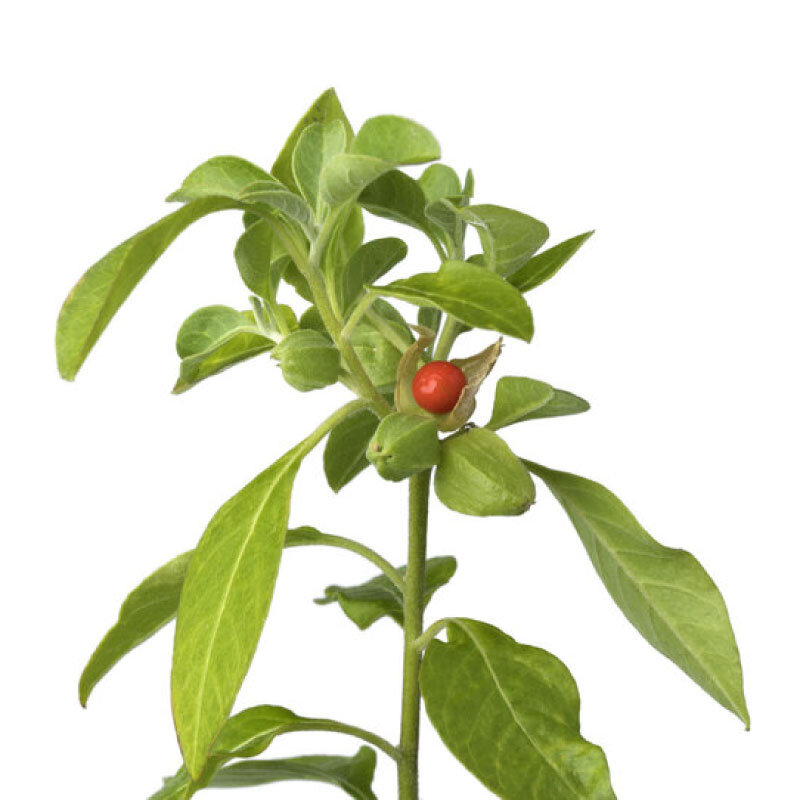
Health benefits of ashwagandha (1, 2, 3)
Ashwagandha has been used for over 3000 years; thus, from its mere traditional usage, it has evolved into a modern capsule supplement where people can get it easily, anywhere. Though there are many health benefits of ashwagandha, some of them do not have a conclusive study finding.
The available scientific data support the conclusion that Ashwagandha is a regenerative tonic due to its multiple pharmacological actions like anti-stress, neuroprotective, anti-tumor, anti-arthritic, analgesic, and anti-inflammatory. It is useful for different types of diseases like Parkinson's, dementia, memory loss, stress-induced diseases, malignoma, and others.
Ashwagandha and neurodegenerative disease (1, 2, 4)
Neurodegenerative disease is usually caused by cognitive impairment. Diseases such as Alzheimer's, Parkinson's, and Huntington's are found to improve after the usage of ashwagandha, in the sense that it slows, stops, reverses, or removes neutritic athropy. It is also said to be used at any stage of the disease, even before a person has been diagnosed with mild forgetfulness.
Ashwagandha and mental health (4,5)
Ashwagandha induced a calming anxiolytic (anti-anxiety) effect that was comparable to the drug Lorazepam in all three standard tests: anxiety tests (the elevated plus-maze), social interaction, and feeding latency in an unfamiliar environment. Moreover, both Ashwagandha and Lorazepam reduced rat brain levels of tribulin, a marker of anxiety.
Ashwagandha also exhibited an antidepressant effect comparable with that induced by imipramine in two standard tests, the forced swim-induced behavioural despair’ and ‘learned helplessness’ tests. The investigations support the use of Ashwagandha as a mood stabiliser in clinical conditions of anxiety and depression.
Another study that was conducted using a prospective, randomised, controlled, double-blind method found that the group that was given ashwagandha root extract exhibited a significant reduction in cortisol level (the stress hormone) as compared to the group that received placebo.

Ashwagandha and arthritis (4, 1)
Ashwagandha is considered an analgesic since it has the ability to relieve pain. Ashwagandha acts on the nervous system to prevent pain signals from being sent. It is also thought to have some anti-inflammatory properties. For this reason, some research has shown it to be effective in treating arthritis.
References
Franziska Spritzler (2019). 12 Proven Health Benefits if Ashwagandha. https://www.medicalnewstoday.com/articles/318407 (Accessed on September 1, 2020).
Ashwagandha (n.d). https://www.webmd.com/vitamins/ai/ingredientmono-953/ashwagandha (Accessed on September 1, 2020).
Medical News Today. Benefits of ashwagandha (2016). https://www.medicalnewstoday.com/articles/318407 (Accessed on September 1, 2020).
Singh et. al. (2011). An Overview of Ashwagandha: A Rasayana (rejuvenator) of ayuverda. Afr J Tradit Complement Altern Med. 2011; 8(5 Suppl): 208–213. doi: 10.4314/ajtcam.v8i5S.9
Chandrasekar et. Al. (2012). A Prospective, Randomized Double-Blind, Placebo-Controlled Study of Safety and Efficacy of a High-Concentration Full-Spectrum Extract of Ashwagandha Root in Reducing Stress and Anxiety in Adults. Indian J Psychol Med. 2012 Jul-Sep; 34(3): 255–262. doi: 10.4103/0253-7176.106022: 10.4103/0253-7176.106022

Sleep hygiene refers to a healthy routine sleep habit that helps one sleep throughout the night or get enough quality sleep. These habits are the cornerstone of cognitive behavioural therapy, the most effective long-term treatment for people with chronic insomnia.
There are certain habits that should be cultivated if you are experiencing poor sleeping habits before you opt to take medication or any remedies. You should consider practising good sleeping hygiene, such as going to bed at the same time every night and being consistent with it. Make sure the bedroom is quiet, dark, relaxing, and at a comfortable temperature. Remove electronic devices, such as TVs, computers, and smartphones, from the bedroom. Avoid large, heavy meals, caffeine, and alcohol before bedtime. Regular exercise during the day is able to make one fall asleep easily at night.
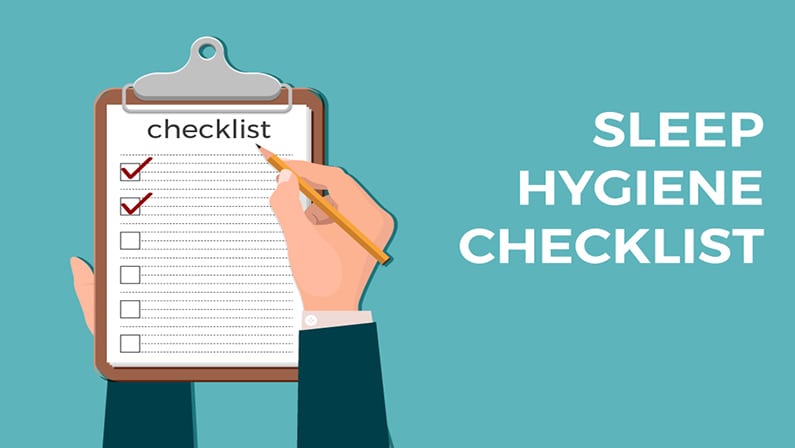
How can all these habits help you get good-quality sleep? (3)
Behaviour during the day and before bedtime has a major impact on sleep. Either it can promote healthy sleep or contribute to sleeplessness.
The daily routines that include what we consume, the medication that we take, how we schedule our days, and how we spend our evenings can significantly affect the quality of sleep. Sometimes, for a person who is experiencing trouble sleeping, it takes only a slight adjustment in their daily routines, or in some cases, they are required to write a two-week diary to help them understand their routines that affect their sleep quality.
Why is good-quality sleep important? (3,4)
Insufficient sleep has major health consequences for adults, adolescents, and young children. Strong evidence found that adults who have insufficient sleep develop numerous health complications, including an increased incidence of chronic disease. Those who have short sleep duration (less than 7 hours per night) and poor sleep quality are associated with cardiovascular morbidity and metabolic disorders such as glucose intolerance, which will also lead to obesity, diabetes, heart disease, and hypertension. Individuals who experience shorter sleep duration are at 1.48 times greater risk of developing and dying of coronary heart disease than those who have sufficient sleep, and they are 1.15 times more likely to have a stroke.
Adults who sleep less than 7 hours per night also have greater difficulty concentrating, remembering, and performing daily activities than those who sleep 7 to 9 hours per night.
When it comes to children, those who experience shorter sleep durations are more likely to become obese than those who do not. Insufficient sleep also affects immunologic function and the development of mood disorders and is associated with depression, deficits in cognition, memory, and learning, and reduced quality of life.
One major consequence of insufficient sleep is daytime sleepiness, which reduces alertness and causes slow reaction times, leading to occupational and medical errors, workplace injuries, impaired driving, and motor vehicle accidents. In 2009, almost 5% of adults in 12 states reported that during the previous 30 days they had nodded off or fallen asleep while driving. In 2005, drowsy driving contributed to 100,000 motor vehicle accidents and 15,000 deaths.
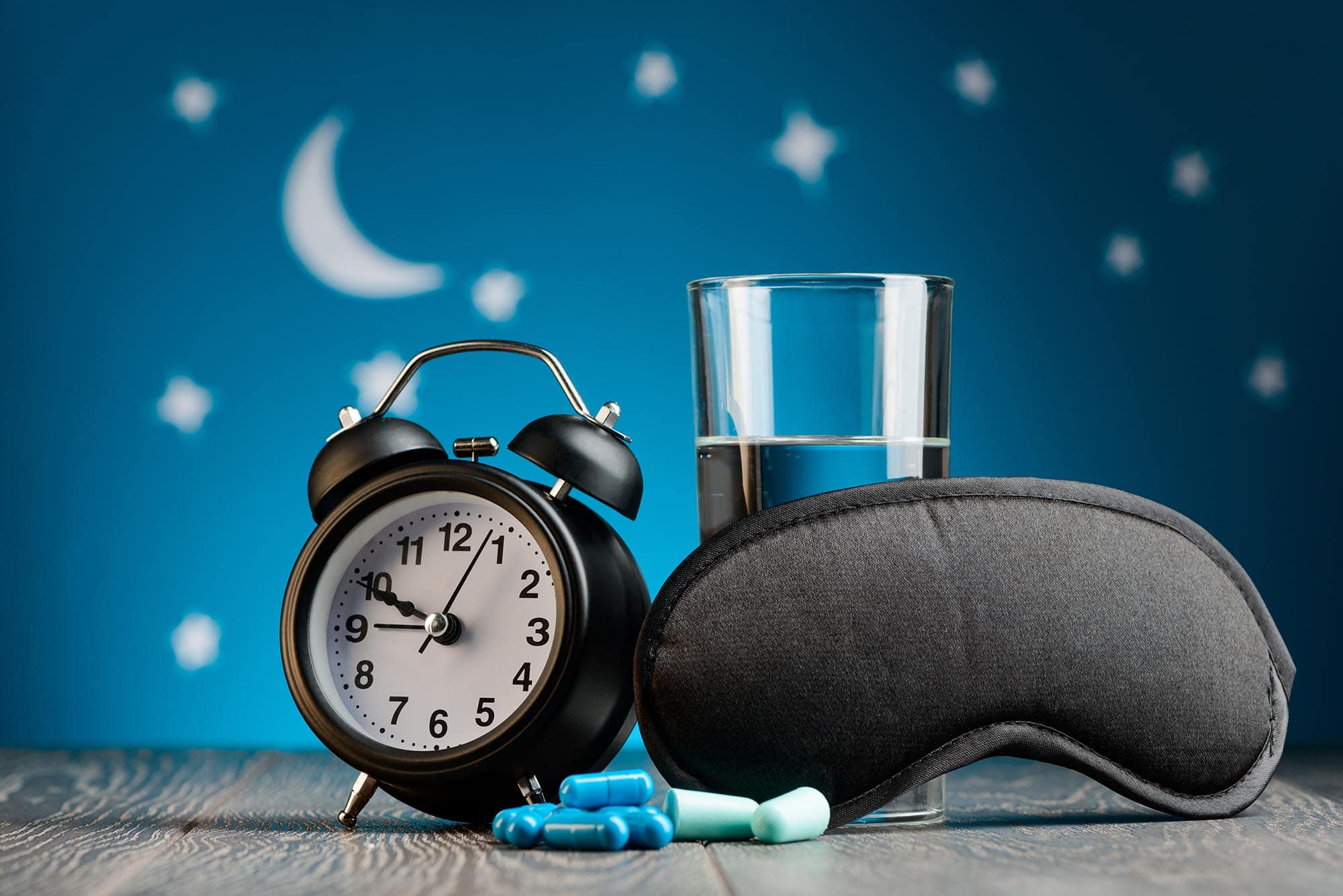
What needs to be done? (4)
As medical practitioners such as doctors, nurses, pharmacists, nutritionists, etc., one must consider the sleeping factor when advising lifestyle modification. One must also ensure that patients or customers are well informed regarding the medication or supplement that they are taking, which will induce symptoms that hinder them from sleeping, such as tachycardia (irregular heart rate), etc. Thus, they need to adjust the timing of medication consumption, sleeping time, and daily activities. One must also consider the sleep factor in finding the diagnosis or underlying cause of one’s health condition.
At this point, the public must be reminded that sleep is an essential factor in maintaining health, especially for diseases like hypertension. There are various factors that can hinder sleep or cause trouble sleeping, so adjustments in lifestyle sometimes need to be made for the improvement of life quality.
References
Centre for Disease Control and Prevention (CDC). Tips for better sleep (2016). https://www.cdc.gov/sleep/about_sleep/sleep_hygiene.html (Accessed on September 4, 2020).
American Academy of Sleep Medicine (AASM). Healthy Sleep Habits (2017). http://sleepeducation.org/essentials-in-sleep/healthy-sleep-habits (Accessed on September 4, 2020).
Sleep Foundation. Nilong Vyas. Sleep Hygiene (2020). https://www.sleepfoundation.org/articles/sleep-hygiene (Accessed on September, 2020).
Irish, L.A., et al. (2015). The Role of Sleeping Hygiene in Promoting Public Health: A Review of Empirical Evidence. Sleep Medicine Reviews. Volume 22, Pages 23-36. https://doi.org/10.1016/j.smrv.2014.10.001
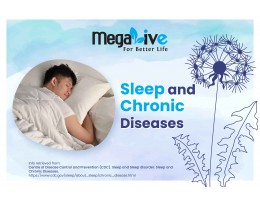
Sleep is always less likely to be linked with chronic diseases, since many people think that it is something that is not related. However, sleep disturbance might be caused by symptoms of chronic diseases, or the other way around, where sleep disorders can eventually lead to chronic diseases. That is to describe how tight the cycle is between sleep and chronic diseases (1).
Chronic disease is the kind of disease that lasts for a long time, such as Diabetes and Cardiovascular diseases. It usually cannot be cured, so it needs to be managed (1, 2).
Two elements that contribute to sleep disorders are the chronic fatigue and pain that people with chronic illnesses experience on a daily basis. They struggle to get to sleep at night and are sleepy all day as a result of this condition. The depression or anxiety that people with chronic diseases experience in relation to their illness can also be a cause of their nighttime sleep disturbances. Certain medications taken by people with chronic illnesses can occasionally cause conditions that prevent them from falling asleep (1, 2).
Sleep, diabetes, obesity, and cardiovascular diseases.
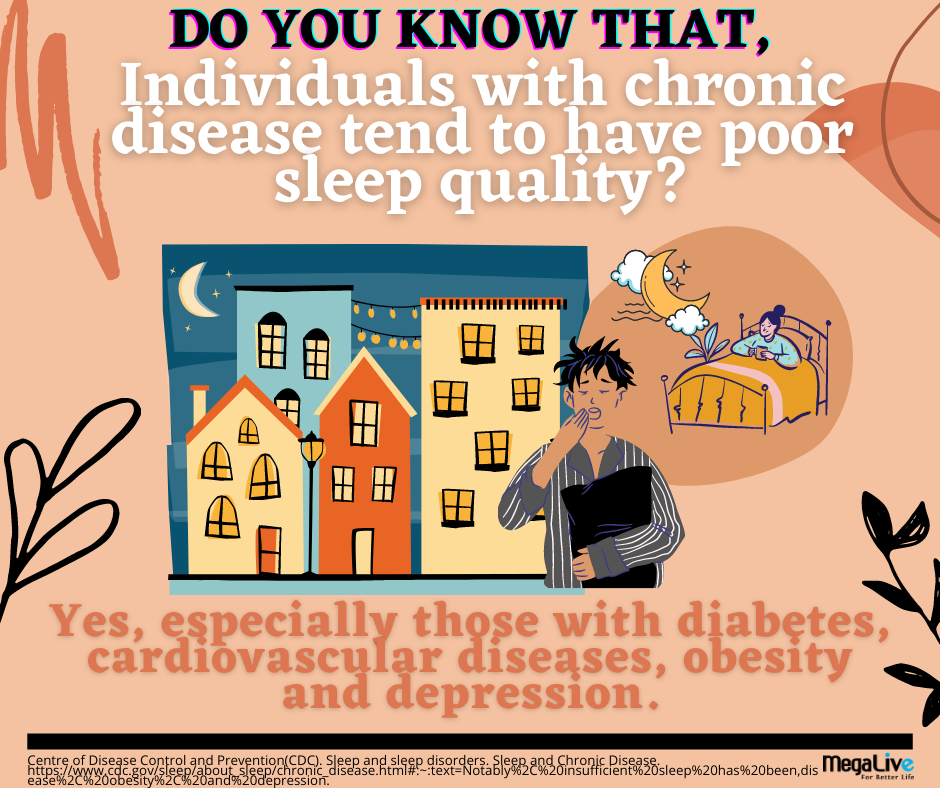
Diabetes and sleep problems often go hand in hand. Diabetes can cause sleep loss, and not sleeping well can cause diabetes due to frequently eating at night, which will then lead to obesity and various underlying factors (3, 4).
Individuals with diabetes who experience a spike in blood sugar will not have good quality sleep since the kidney is trying hard to excrete the sugar by urinating, so individuals with a spike in blood sugar level will usually experience getting up and going to the toilet all night long (3, 4). Thus, the only solution to this is to control blood glucose levels, eat well during the day, and eventually experience a good sleep at night.
Touching on the fact that not sleeping well can cause diabetes due to frequently eating at night, one study, found that people who get less sleep tend to be heavier than those who sleep well, since being overweight is a risk factor for the development of diabetes (3, 4).
Obese individuals also experience sleep apnea, a condition of sleep disorder indicated by loud snoring and paused breathing when you sleep. The culprit behind this may be the weight gain, which causes fat to deposit around the upper airway and obstruct breathing (3, 4).
There are many effective treatments for sleep apnea. These include lifestyle changes such as weight loss for mild cases and devices to open-up blocked airways for more significant cases (3, 4).
As for sleep and cardiovascular diseases, when we sleep, our blood pressure goes down. This makes our body and mind relax and be calm. However, for individuals with sleep problems, their blood pressure level will stay higher for a long time since it does not get the chance to rest. Thus, prolonged high blood pressure can lead to various heart disease problems, such as stroke (5).
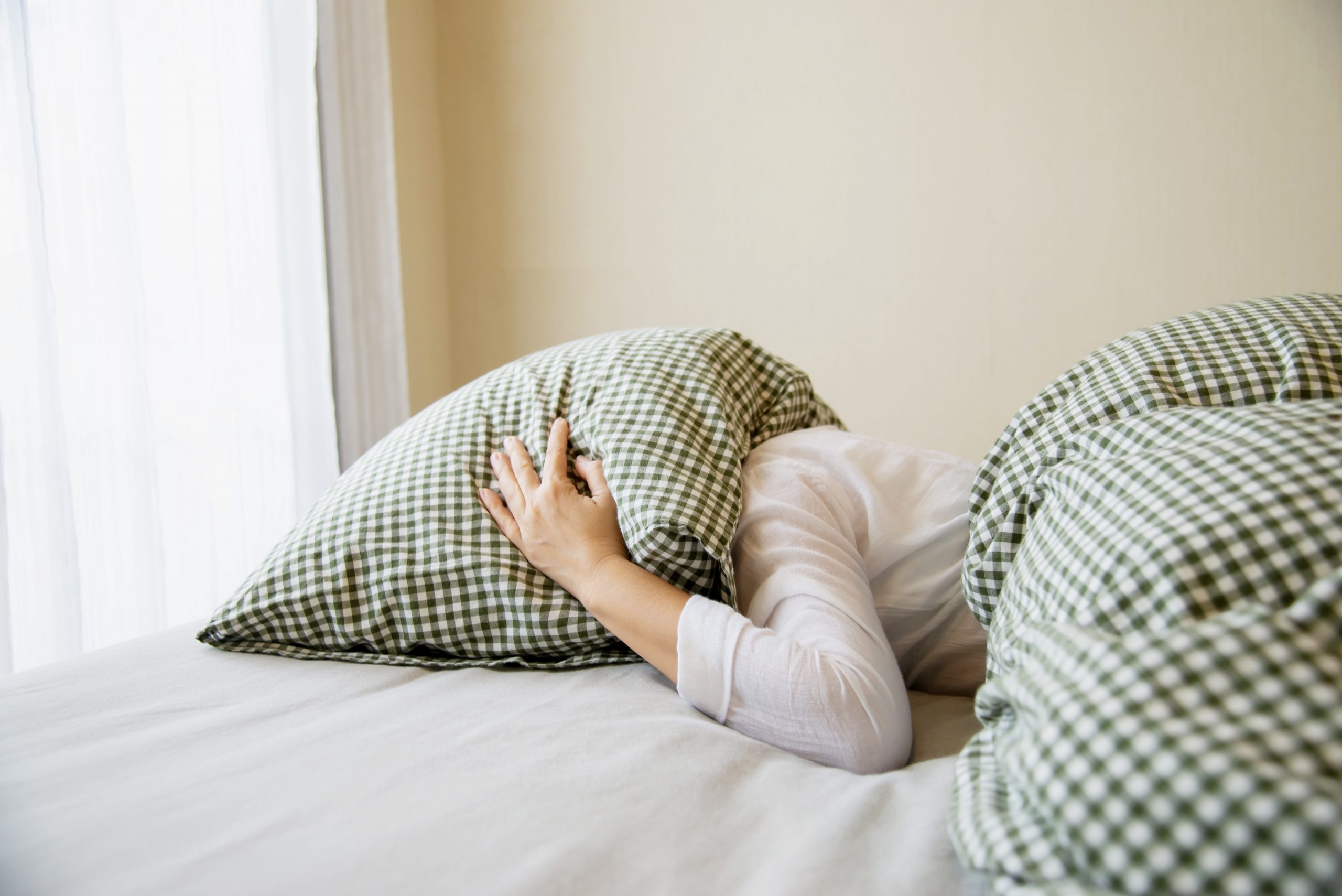
Conclusion
Sleep is as important as eating. It acts as the reset button for the whole-body function. It allows the body's systems to realign, grow, and slow down before it kicks off another day. Thus, do yourself a favour today by getting sufficient quality sleep.
But if you already have trouble sleeping, find out ways to improve it either by managing your underlying health condition that hinders you from getting good sleep or by following some sleeping hygiene techniques in order to train your body and mind to fall asleep. It is not a one-day job; it requires many days, weeks, and perhaps months, but if you are consistent, it will surely have a fruitful result. Happy sleeping, and live your life to the fullest.
References
Centre of Disease Control and Prevention (CDC). Sleep and Sleep disorder. Sleep and Chronic Diseases. https://www.cdc.gov/sleep/about_sleep/chronic_disease.html#:~:text=Notably%2C%20insufficient%20sleep%20has%20been,disease%2C%20obesity%2C%20and%20depression. (Accessed on September 11, 2020).
Sleep and Chronic Illness. https://www.webmd.com/sleep-disorders/sleep-disorders-sleep-and-chronic-illness (Accessed on September 11, 2020).
The Sleep – Diabetes Connection. https://www.webmd.com/diabetes/features/diabetes-lack-of-sleep (Accessed on September 11,2020).
Deepak Khandelwal, Deep Dutta, Sachin Chittawar, and Sanjay Kalra (2017). Sleep Disorders in Type 2 Diabetes. Indian J Endocrinol Metab. 21(5): 758–761. DOI: 4103/ijem.IJEM_156_17
Centre of Disease Control and Prevention (CDC). How does sleep affects your heart health. https://www.cdc.gov/features/sleep-hearthealth/index.html#:~:text=Adults%20who%20sleep%20less%20than,attack%2C%20asthma%2C%20and%20depression.&text=Some%20of%20these%20health%20problems,High%20blood%20pressure. (Accessed on September 11, 2020).

Stress is a response to challenging circumstances that we are in; it is also a response to things that happen in our daily lives. Everything that happens, be it in our daily lives or not (to someone else), can somehow affect us emotionally, physically, and behaviorally. Stress is not all bad; the right amount of stress will act as a precursor to help us do our best and keep us alert and energetic. However, too much stress can make us tense and anxious and hinder our sleep quality (1, 2).
What is making you stressed might not make others stressed, and vice versa. When it comes to stress, there are just no standard parameters to measure. Since the amount of stress that individuals perceive differs from one another, even when it stems from the same source of stress (1, 2, 3).
Stress induces multiple body reactions in the brain, nervous system, endocrine system (hormones), and immune system. Research named it hyperarousal, which is a state when our body is in a stress state. In other words, our brain perceives the condition as being on alert (1, 2, 4).
The signs of a hyperarousal state include the fact that you cannot shut down your busy mind. Your mind seems to have no shut-down button. It keeps going over and over your stress, worries, and frustrations, which you contemplate from various angles. Which is also one of the reasons that hinder you from getting enough quality sleep. Secondly, when you are experiencing muscle tension for no reason, It can be aches in areas such as the neck and shoulders or a constant headache. Thirdly, when you are experiencing a heart race. This is particularly associated with the hormone cortisol (a stress hormone). This will then result in a condition where your body and brain are wide awake, making it difficult for you to fall asleep. This explains why individuals who are stressed experience sleep disturbance. (1)

It is unfair to discuss in the area that stress causes sleep disturbances without noting that there are other conditions that will make individuals who experience stress sleep excessively as well. It is somewhat a mystery to experts as well, though it is hypothesised due to the different kinds of stress that individuals experience and the different coping mechanisms they develop in adapting to different stressors (3).
What to do (4)
Fortunately, there are habits that, if you cultivate them diligently, will train your mind to ease stress and help you sleep. First, practise relaxation exercises such as progressive muscle relaxation or deep breathing techniques before turning in for the night. This technique can help you unwind. It will help your body and mind dial down the stress. It is also wise to actually have relaxing pre-sleep rituals, such as changing into comfortable clothing for sleep, dimming your bedroom light, being in a comfortable situation, taking a warm bath or drinking a cup of warm water or milk, avoiding caffeinated drinks like soda, tea, and coffee in the late afternoon, and slowly nesting yourself.
Of course, these are not tips that will work for everybody; anyhow, you've just got to do some trial and error. You just have to give it a try and adjust it accordingly so that it will suit your condition better.
Lastly, if you have anything in your mind that is stressing you out, think of it as just a phase that you have to endure. Whatever situation you are in, you know it better than anyone else since you have the key to getting yourself out of it. You are in masterful control of it; soon you will be out of this. Think positive thoughts and try to talk to someone you trust. If you think your condition is worsening, it may be a sign for you to seek medical help.
References
Sleep Foundation.org. National Sleep Foundation. Stress and Insomnia (July 2020). https://www.sleepfoundation.org/articles/stress-and-insomnia (Accessed on September 20, 2020).
Sleep Foundation.org. National Sleep Foundation. Relaxation Exercises for Falling Asleep (July 2020). https://www.sleepfoundation.org/shift-work-disorder/shift-work-you/relaxation-exercises-falling-asleep (Accessed on September 20, 2020).
Kim, E. J., & Dimsdale, J. E. (2007). The effect of psychosocial stress on sleep: a review of polysomnographic evidence. Behavioral sleep medicine, 5(4), 256-278.
Tips to reduce stress and Sleep better (2019). https://www.webmd.com/sleep-disorders/tips-reduce-stress (Accessed on September 20, 2020).